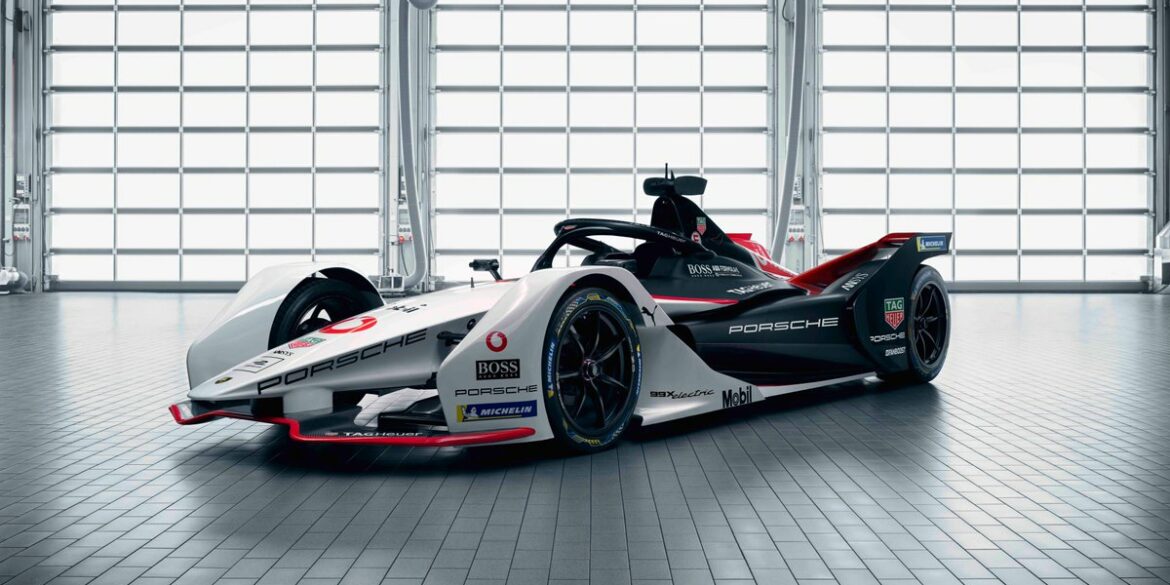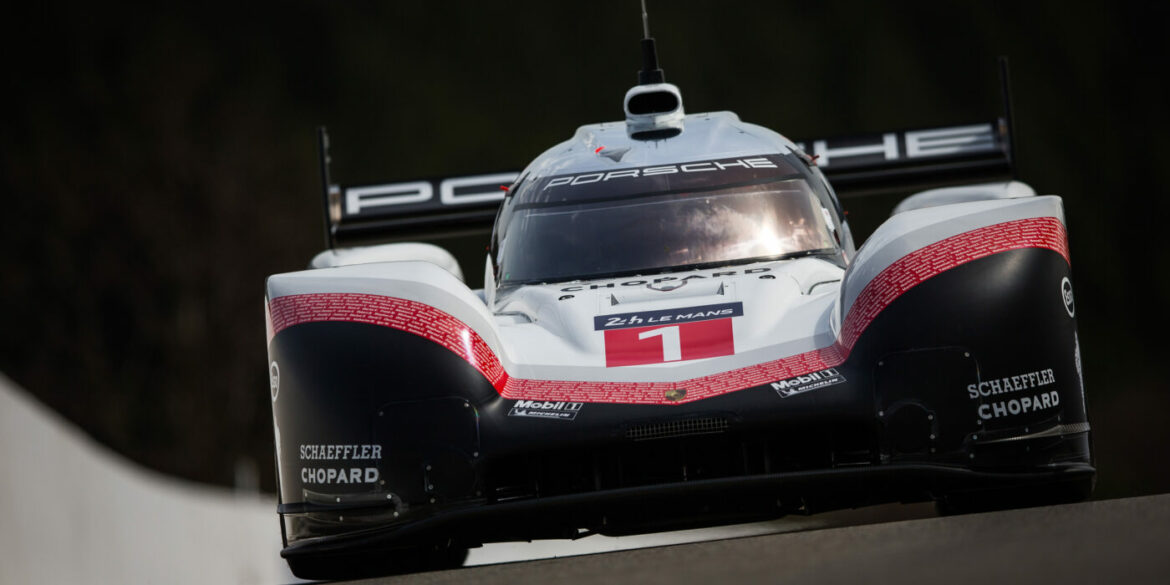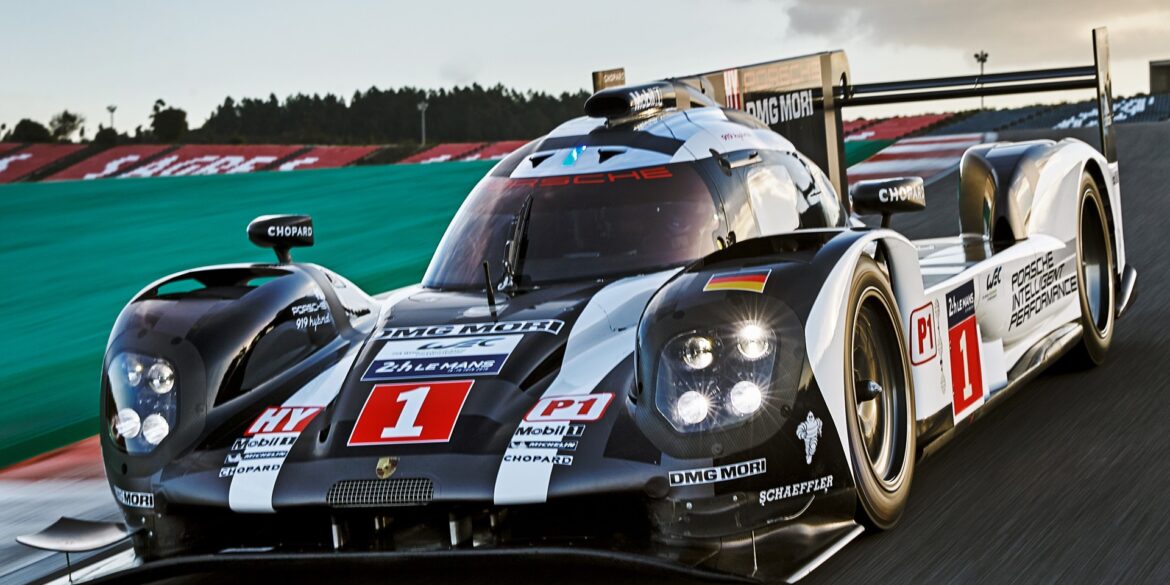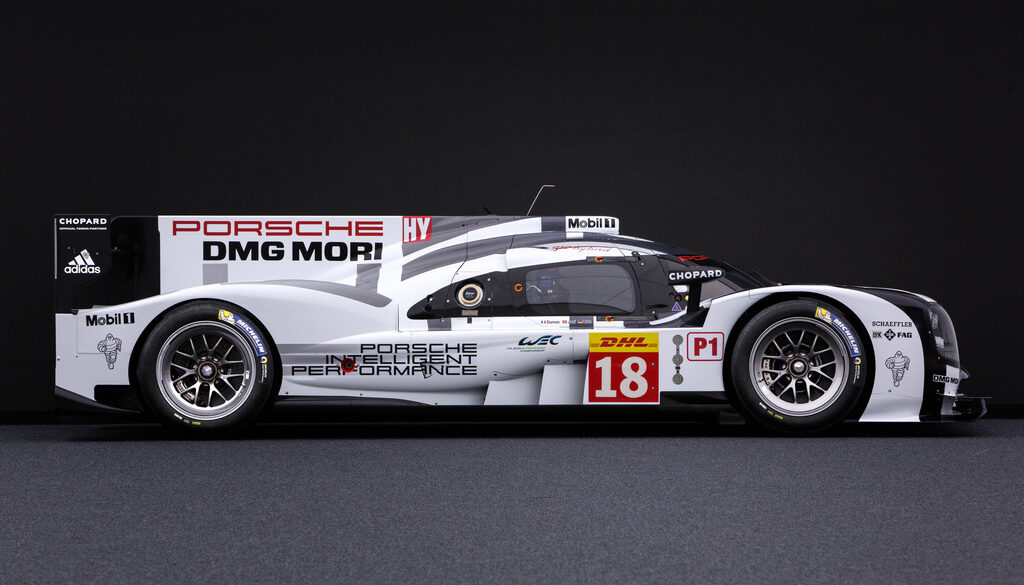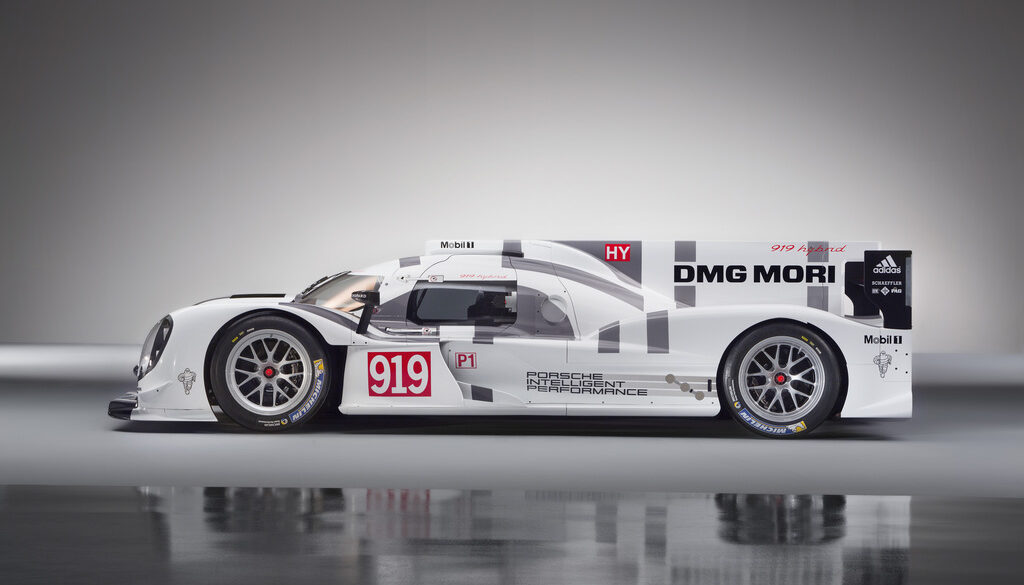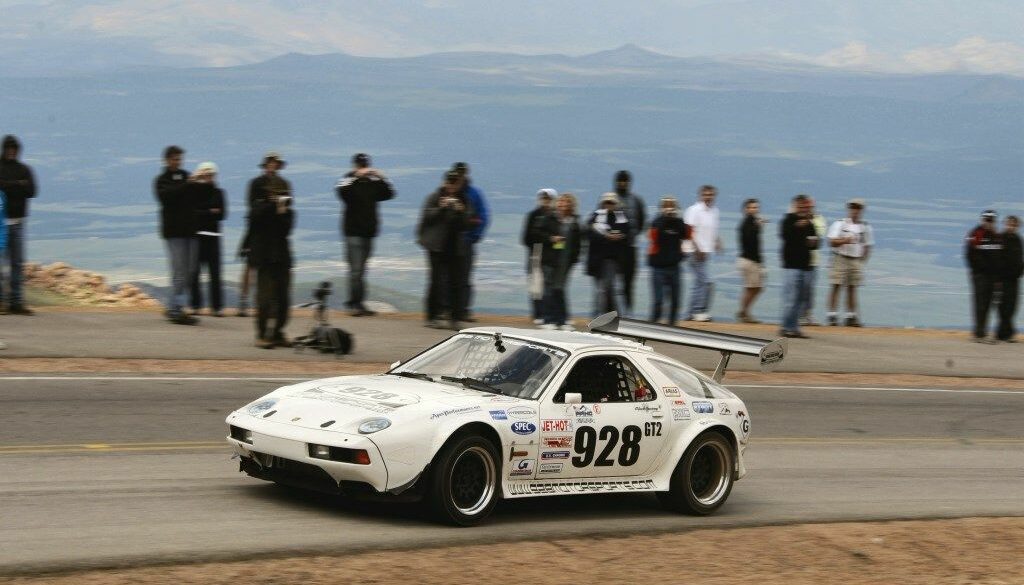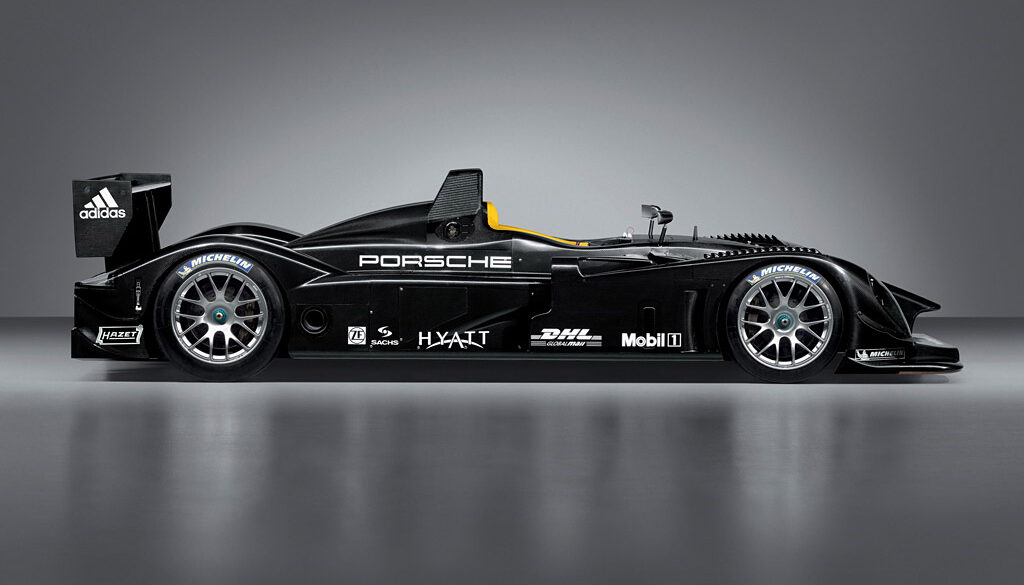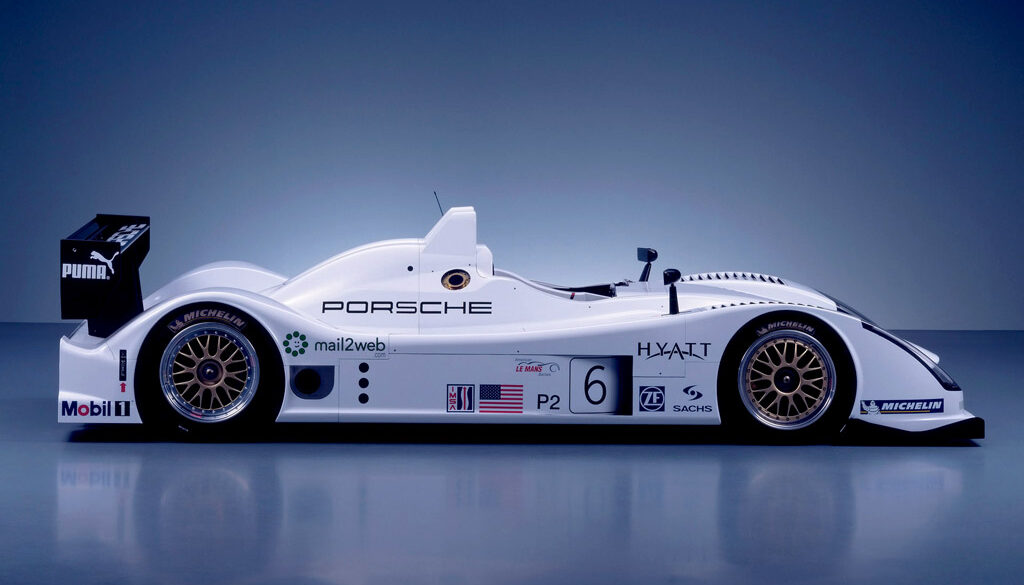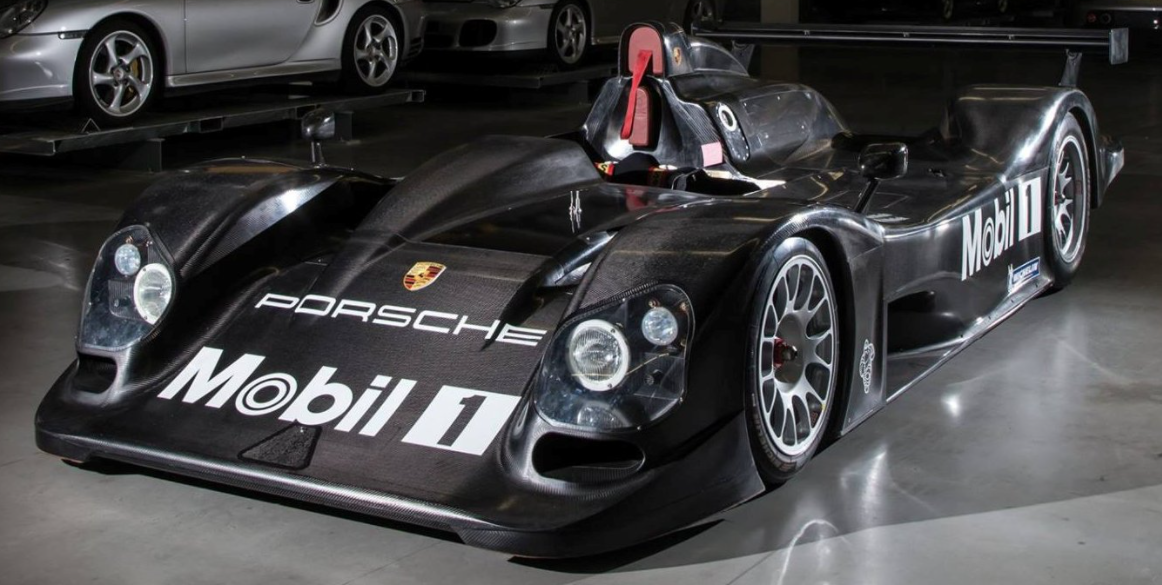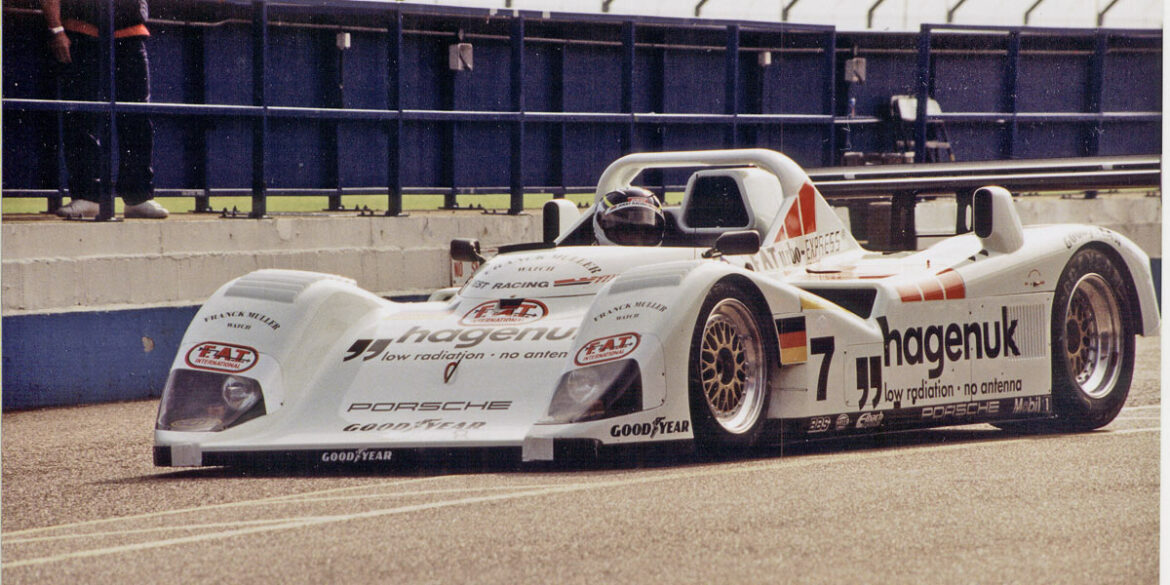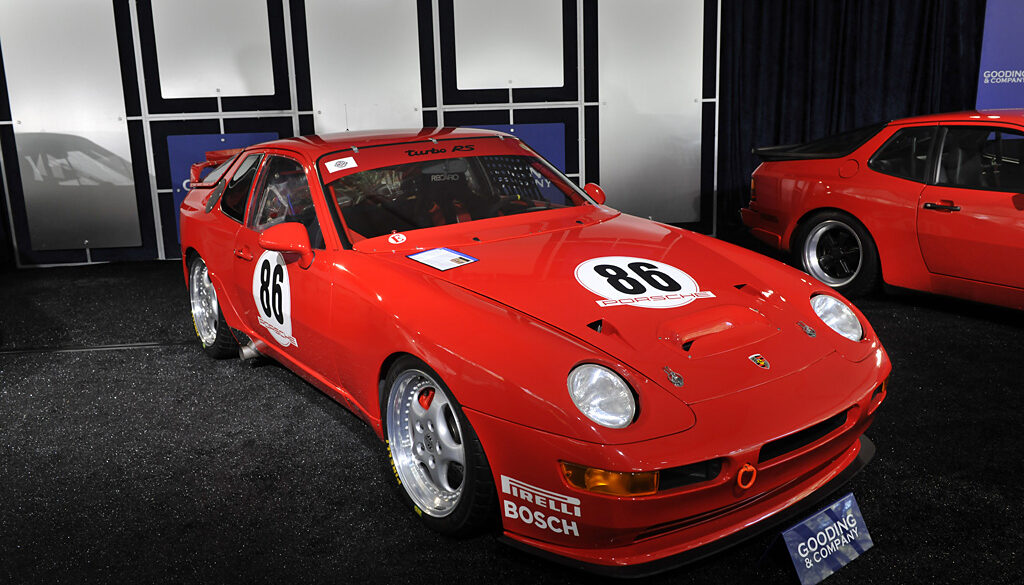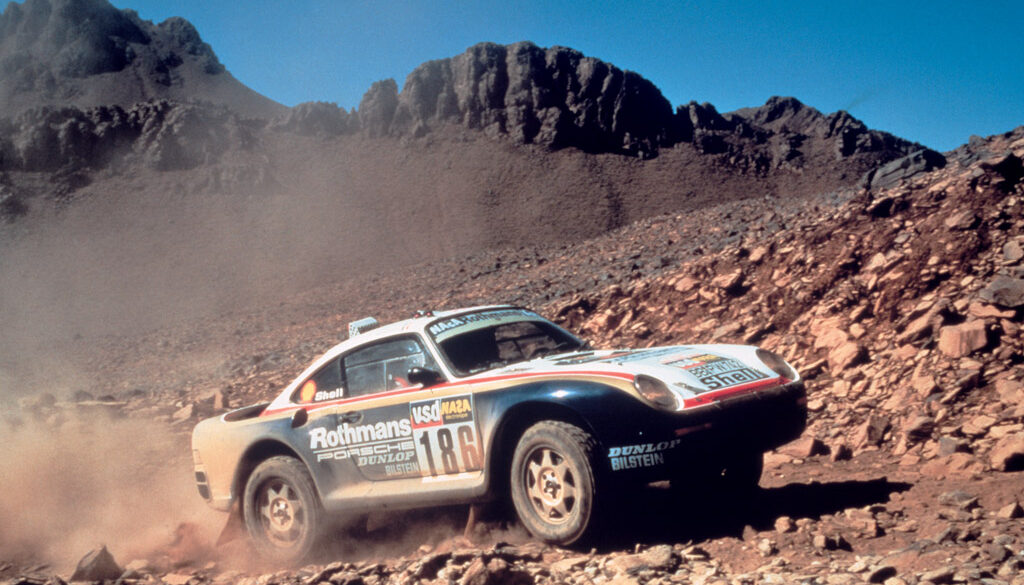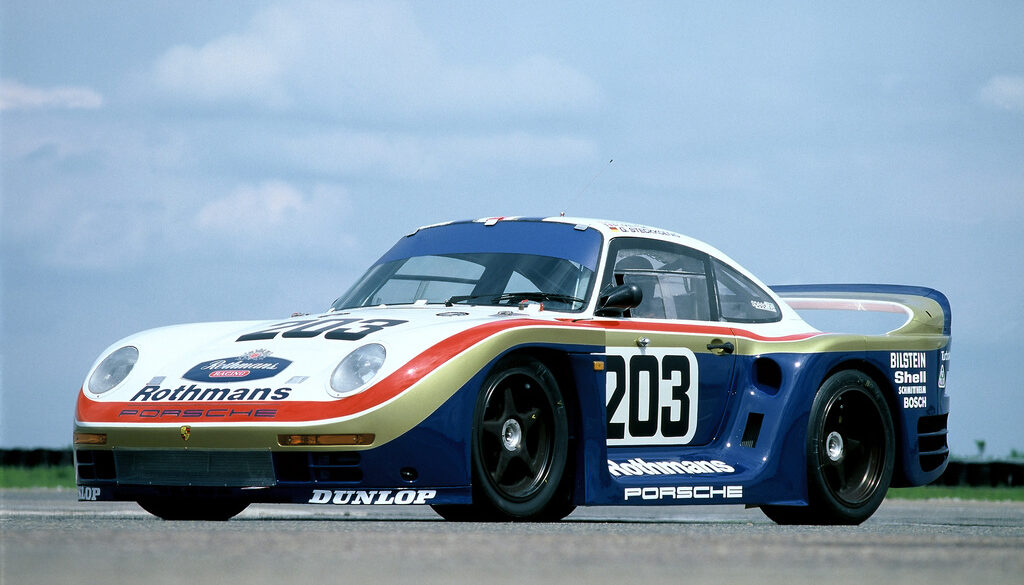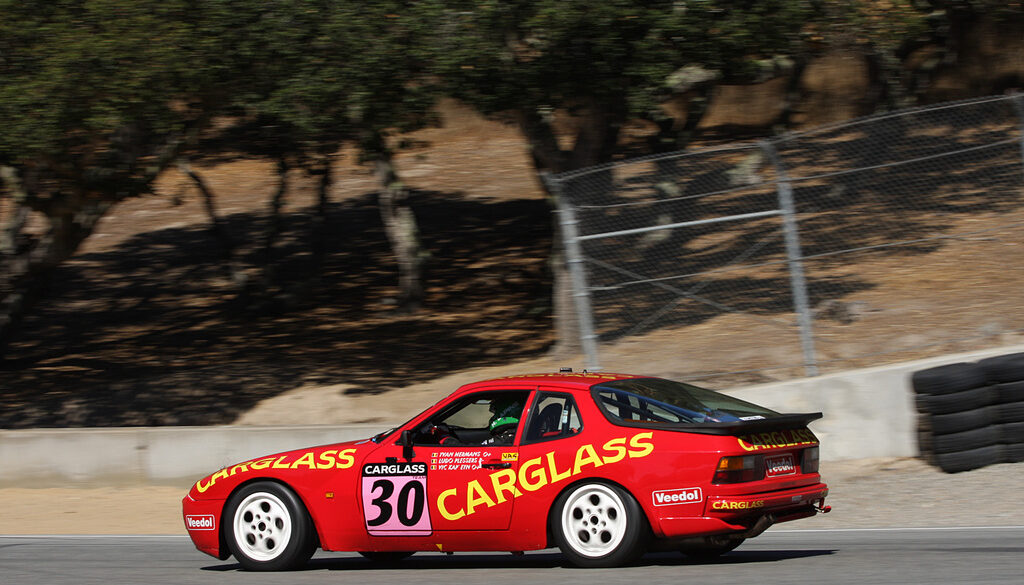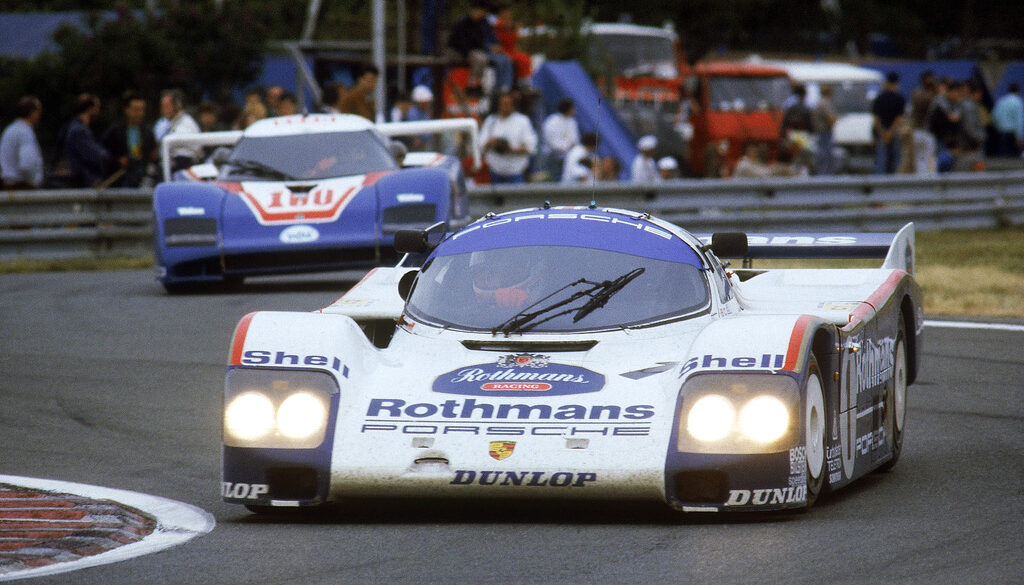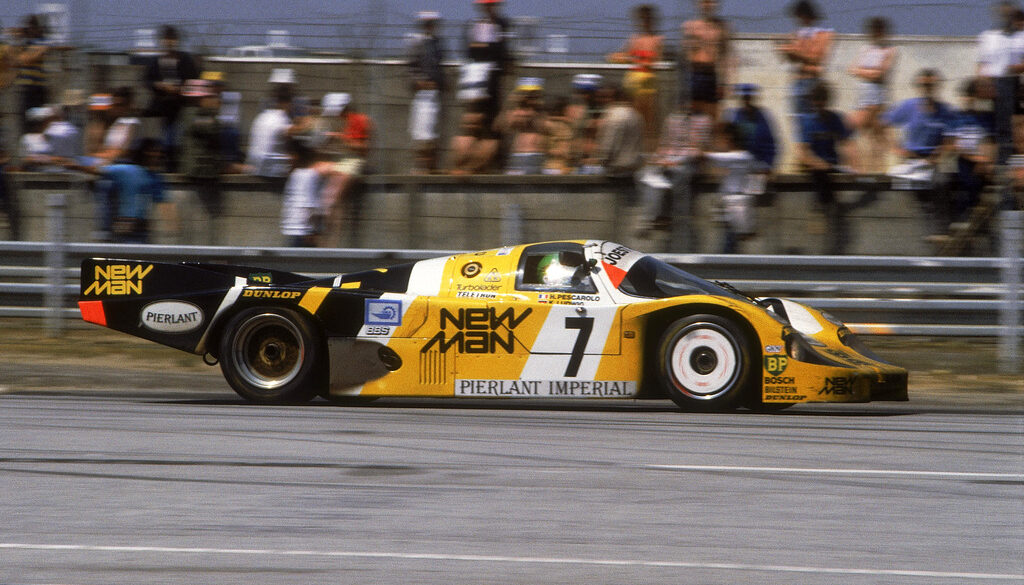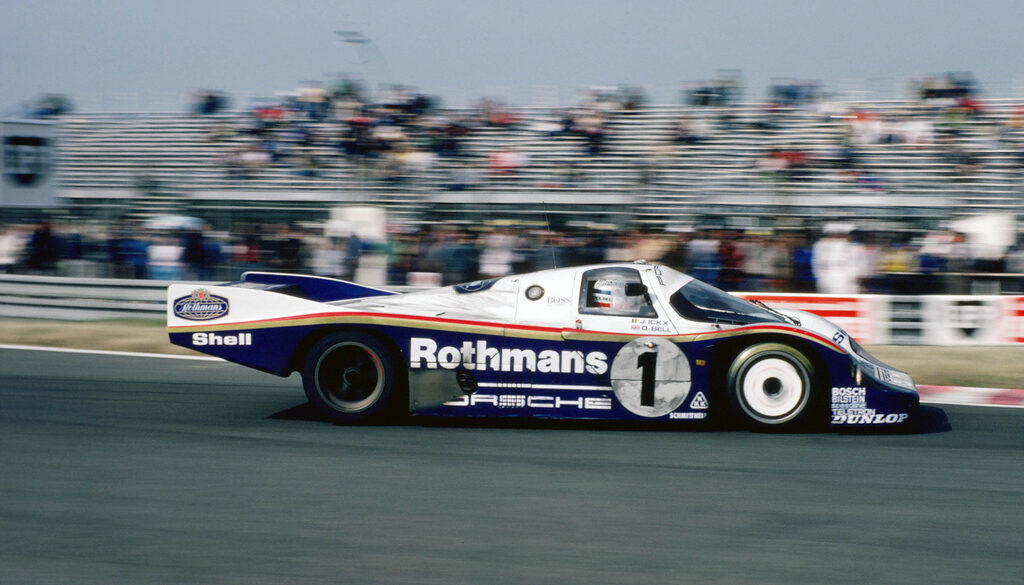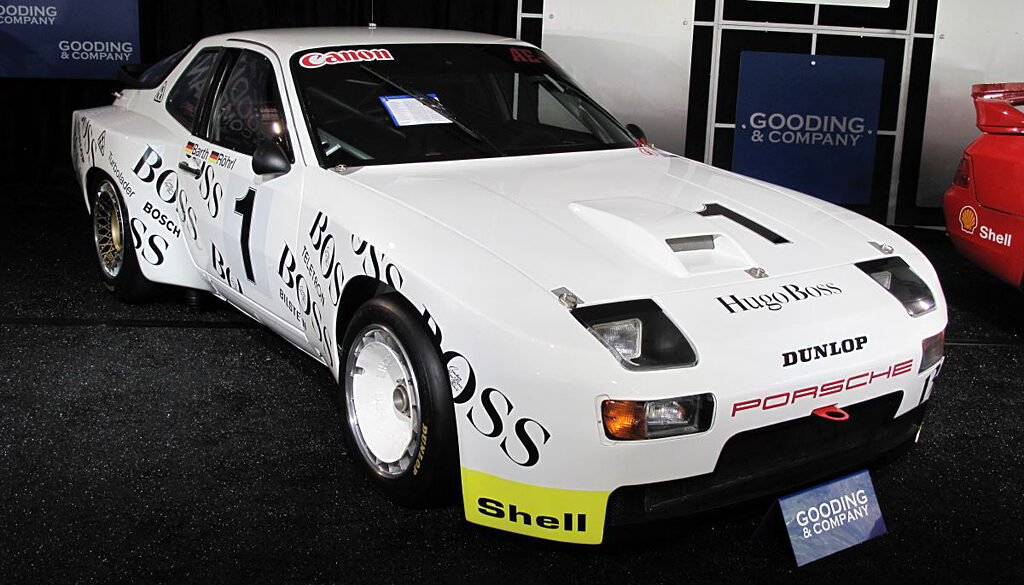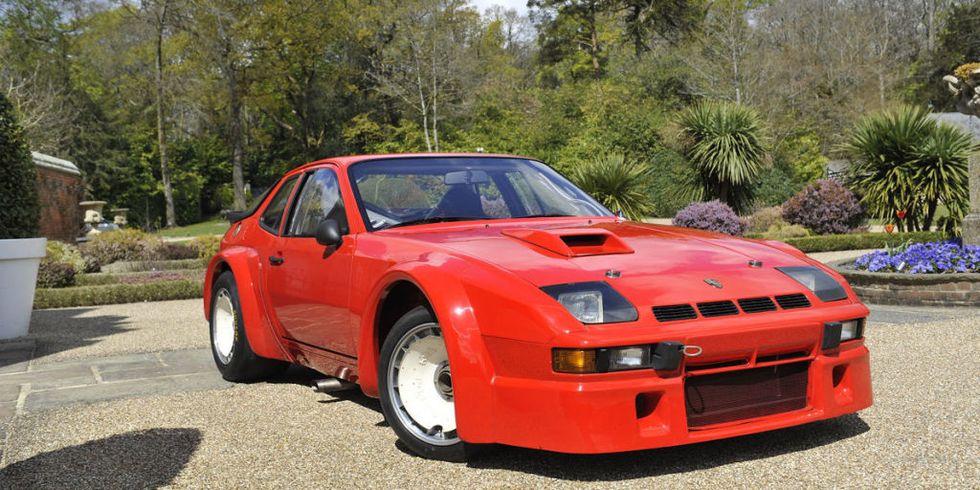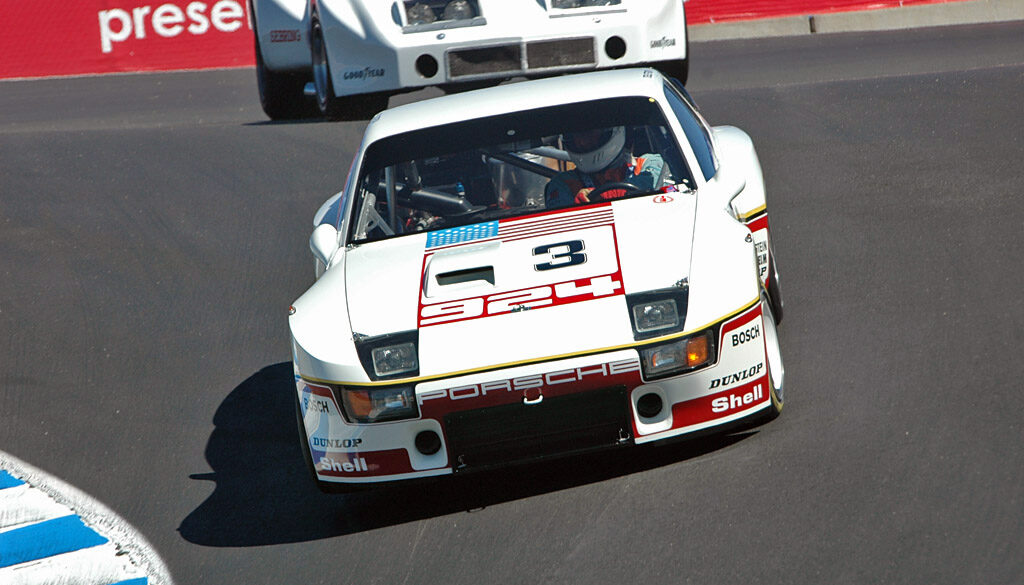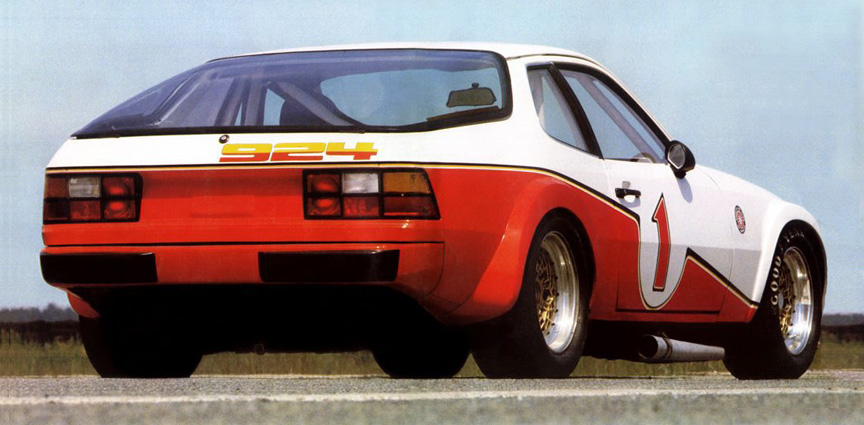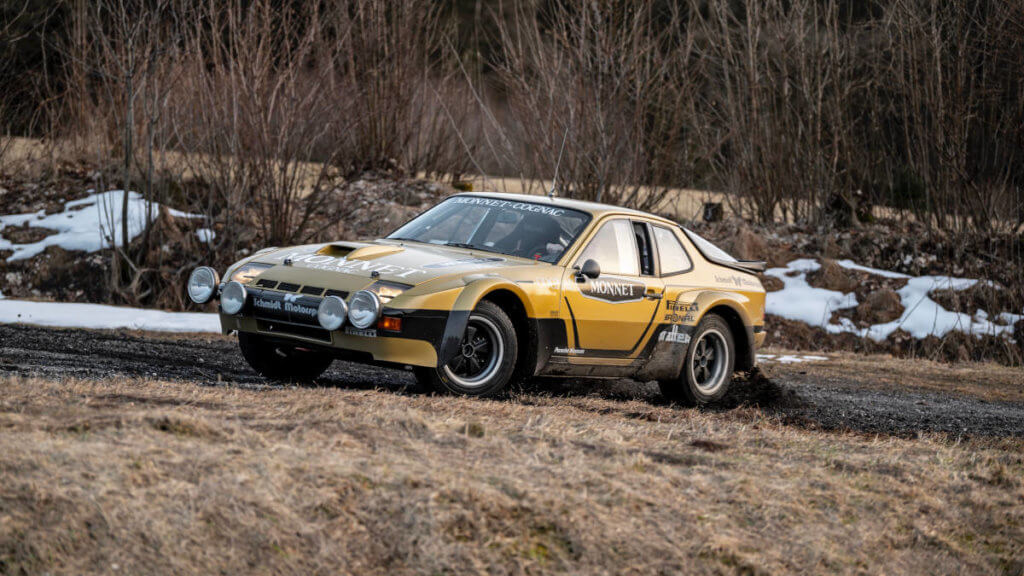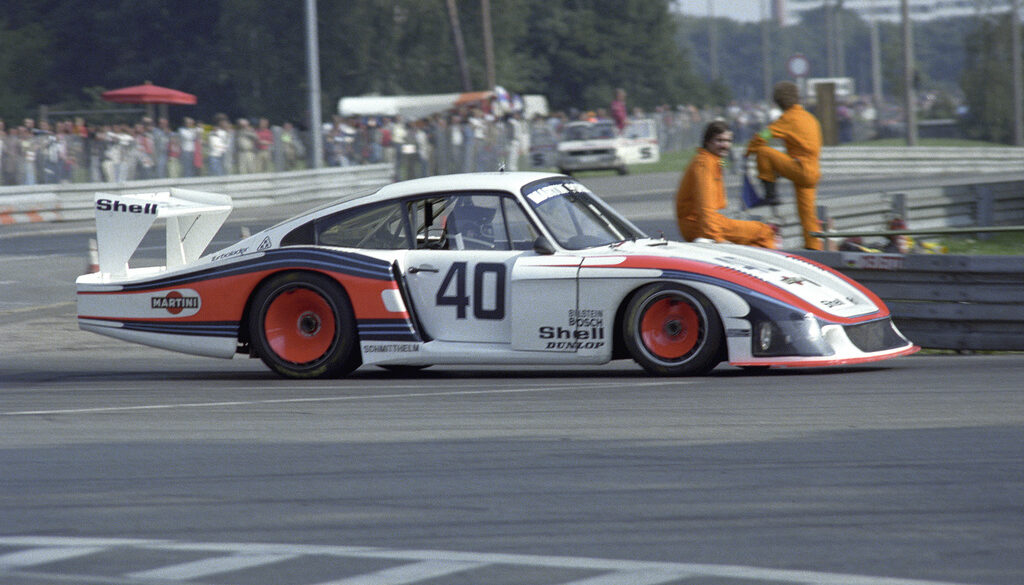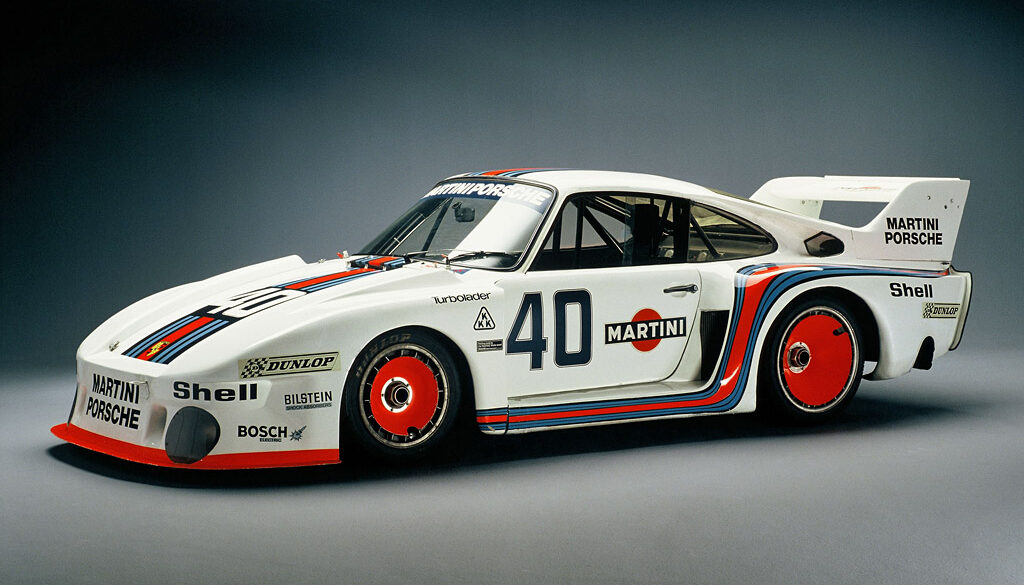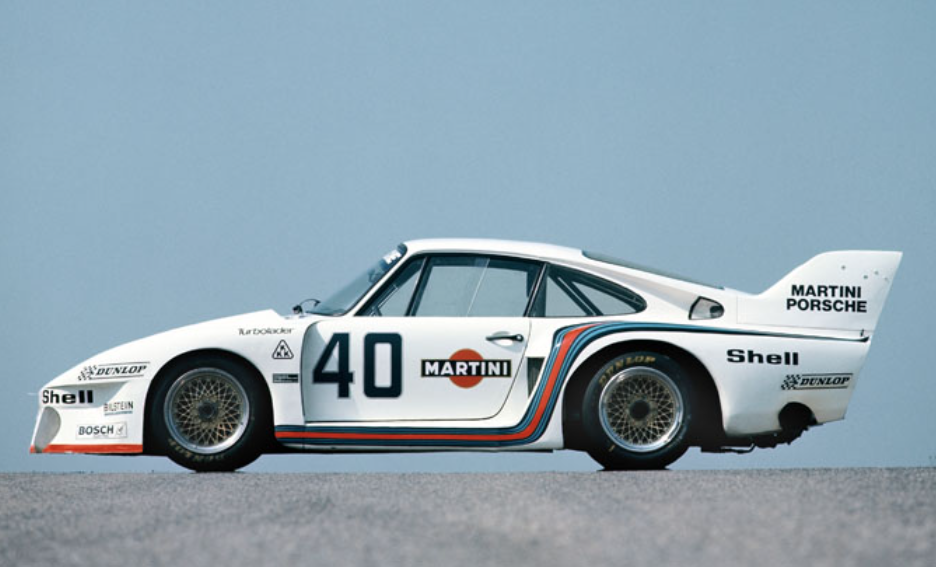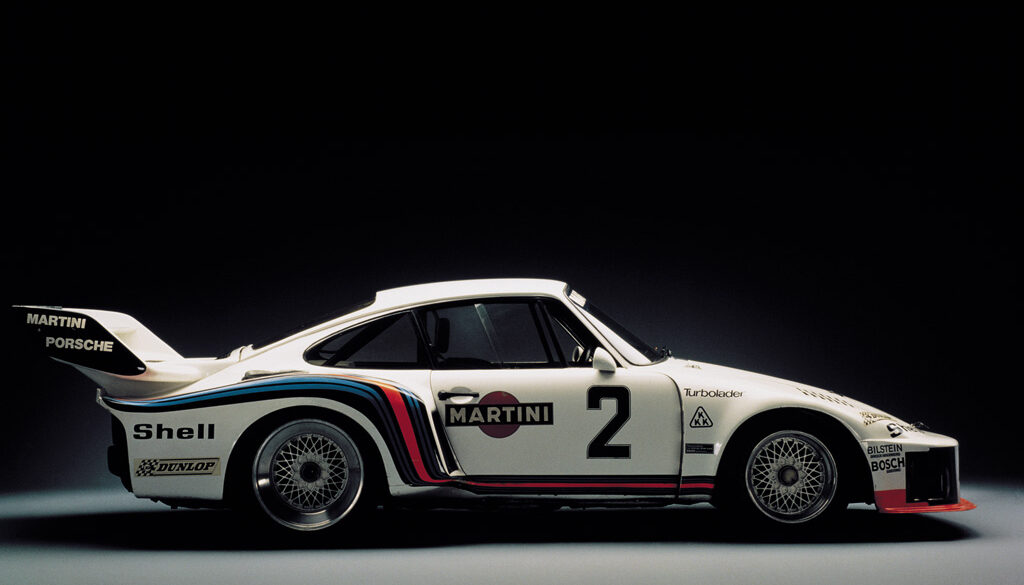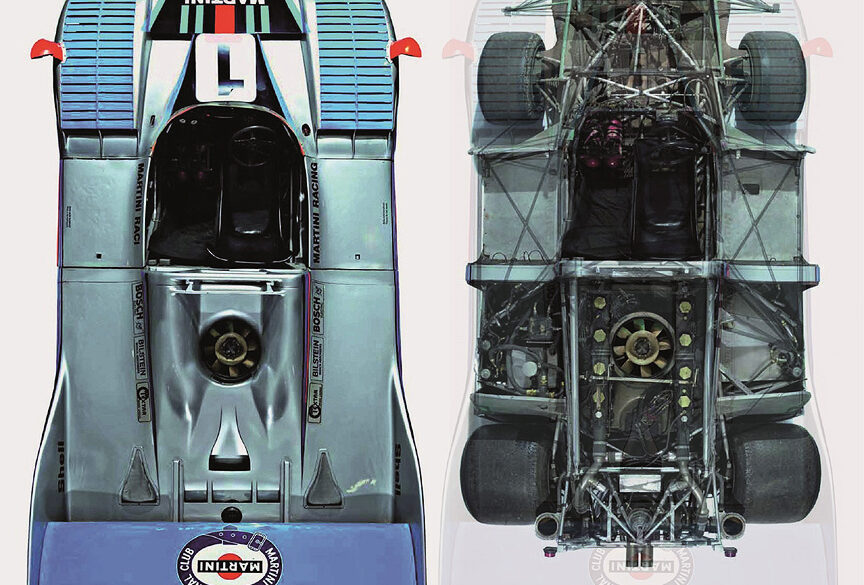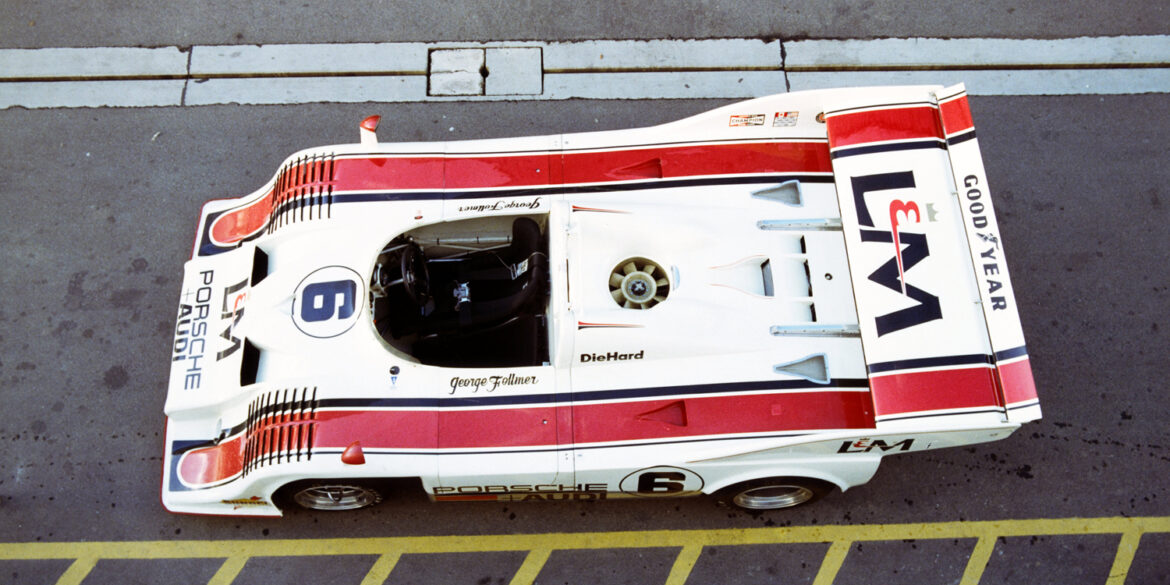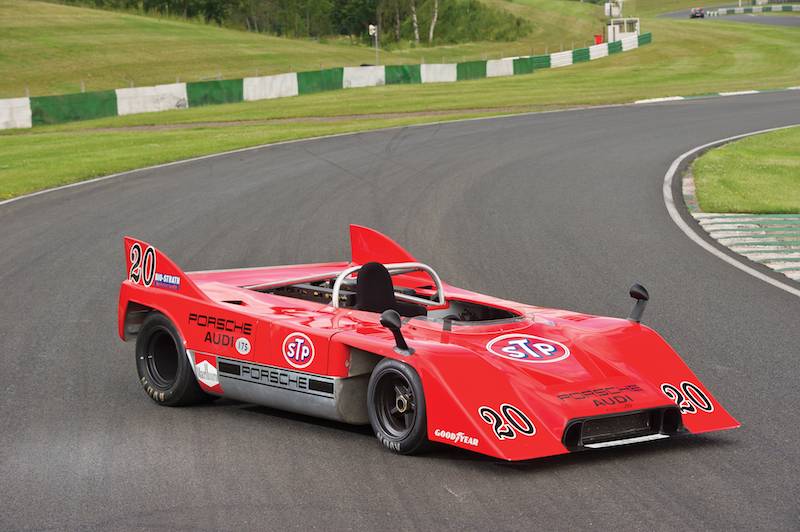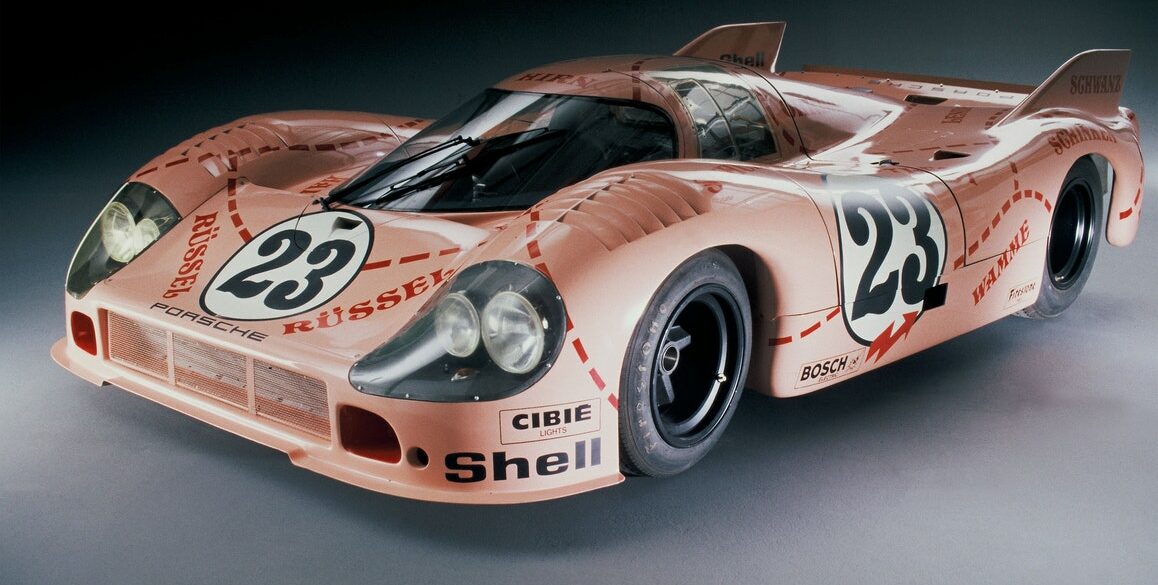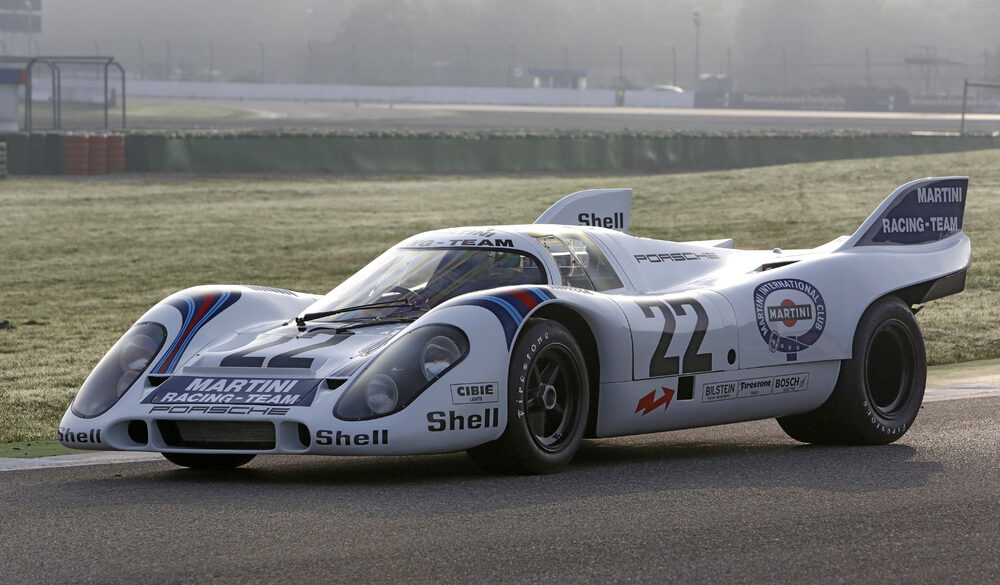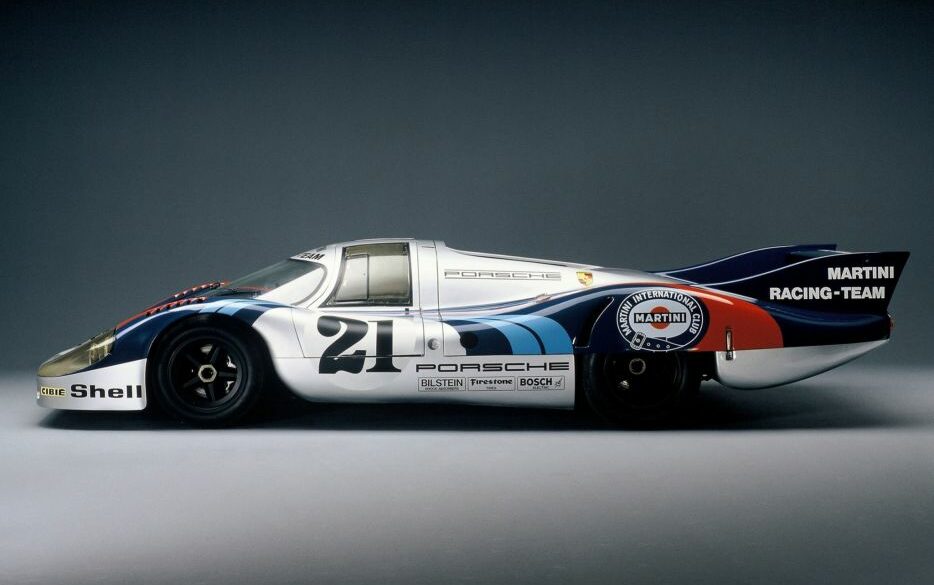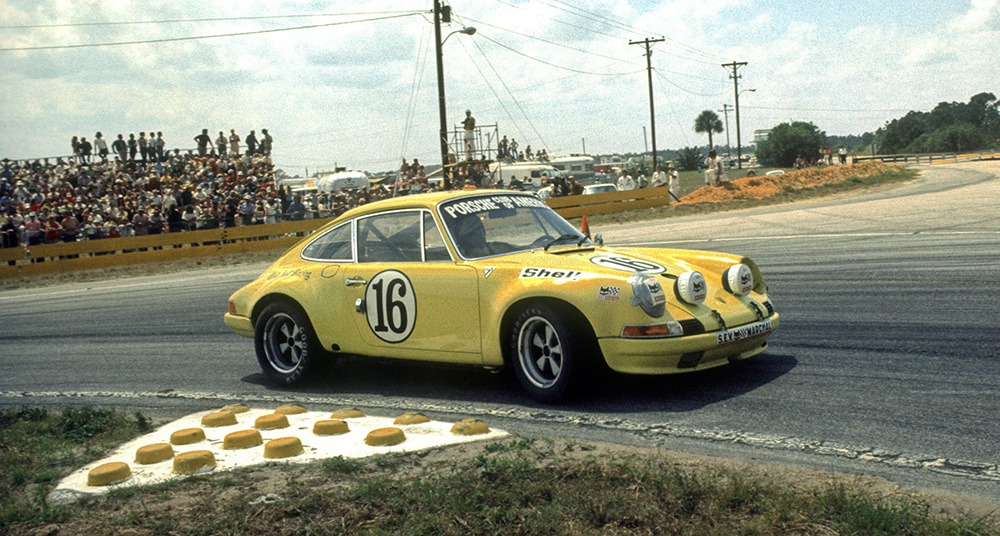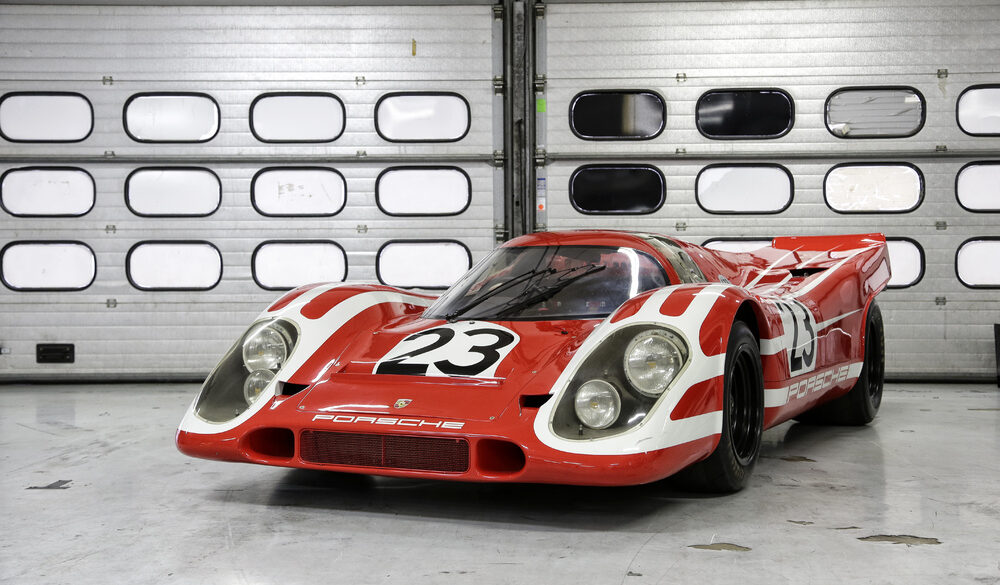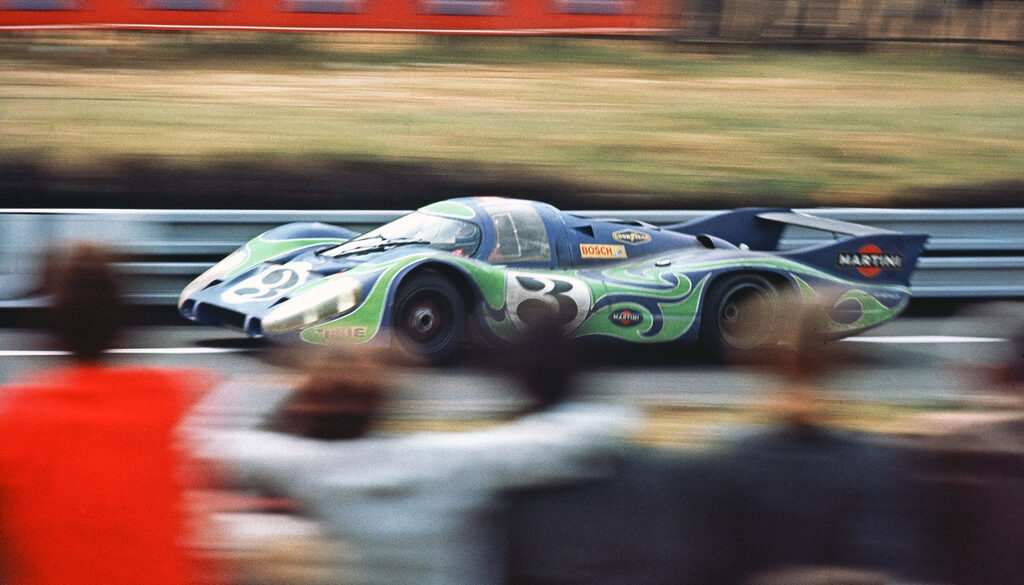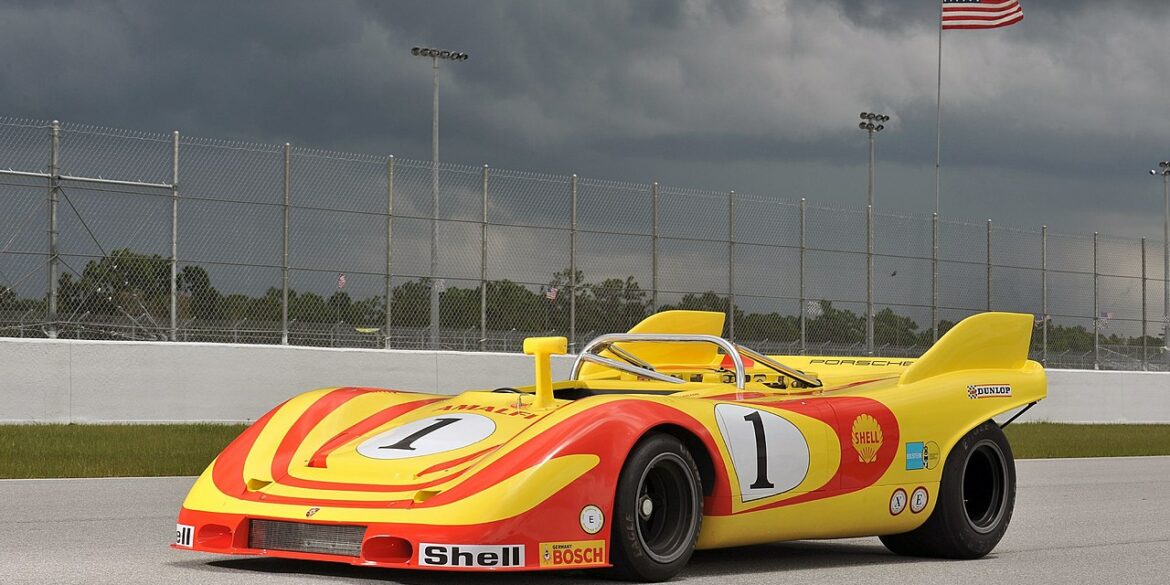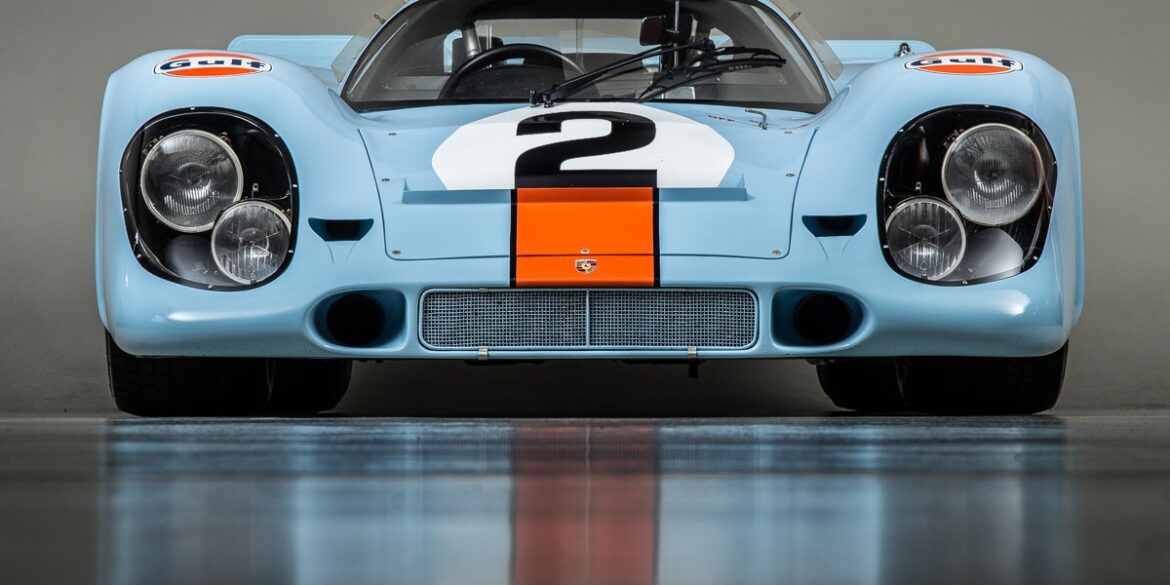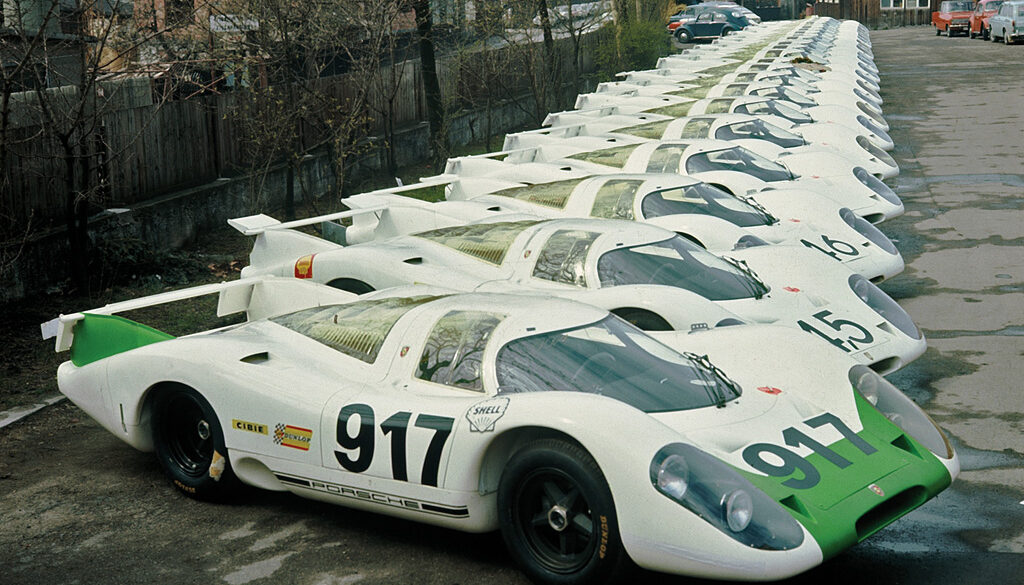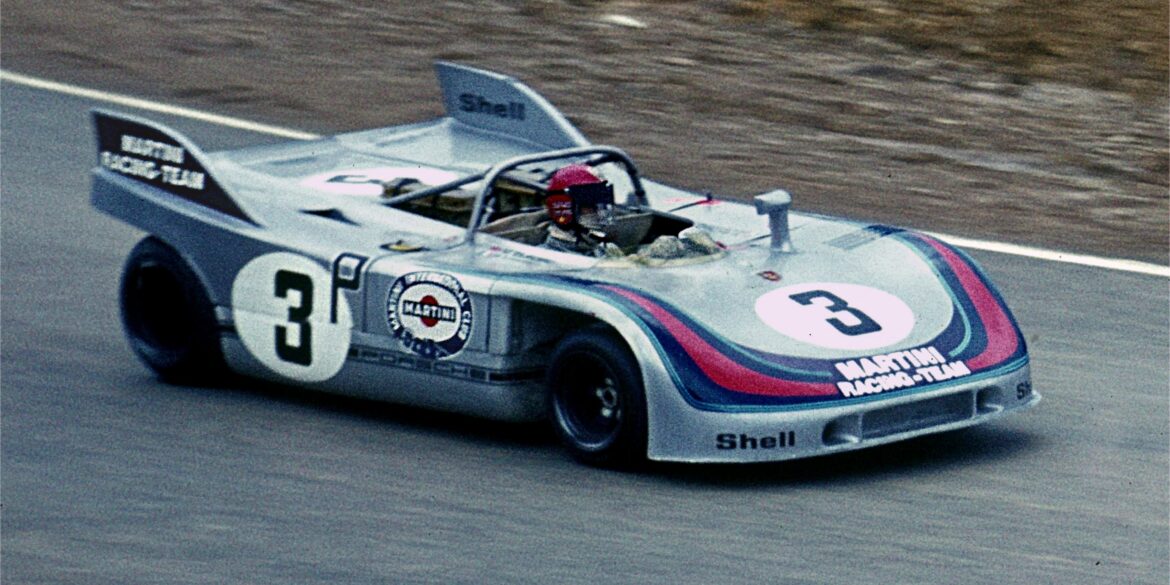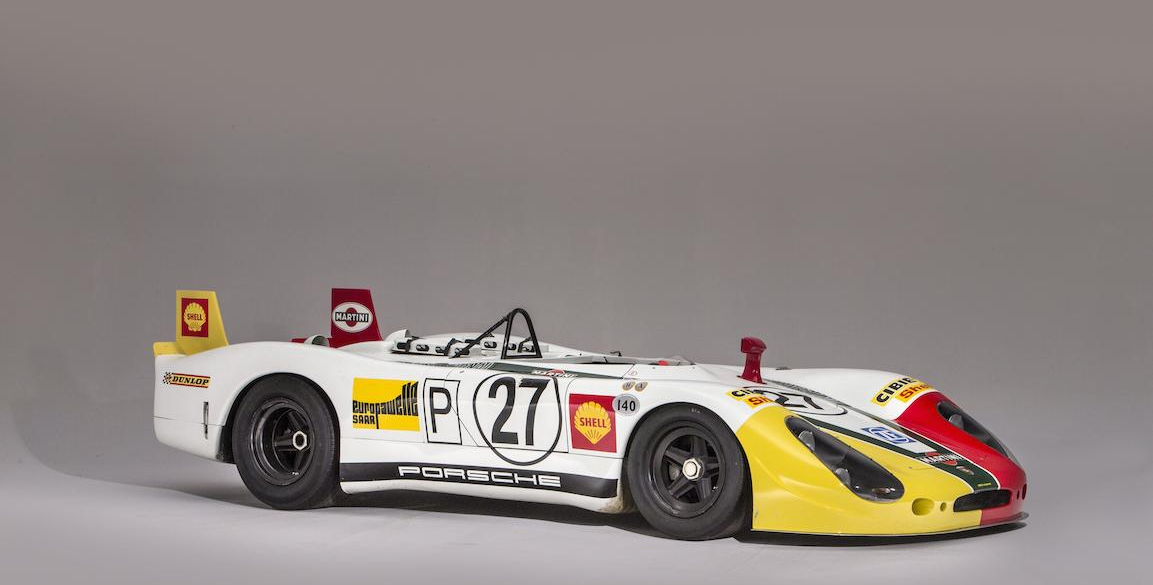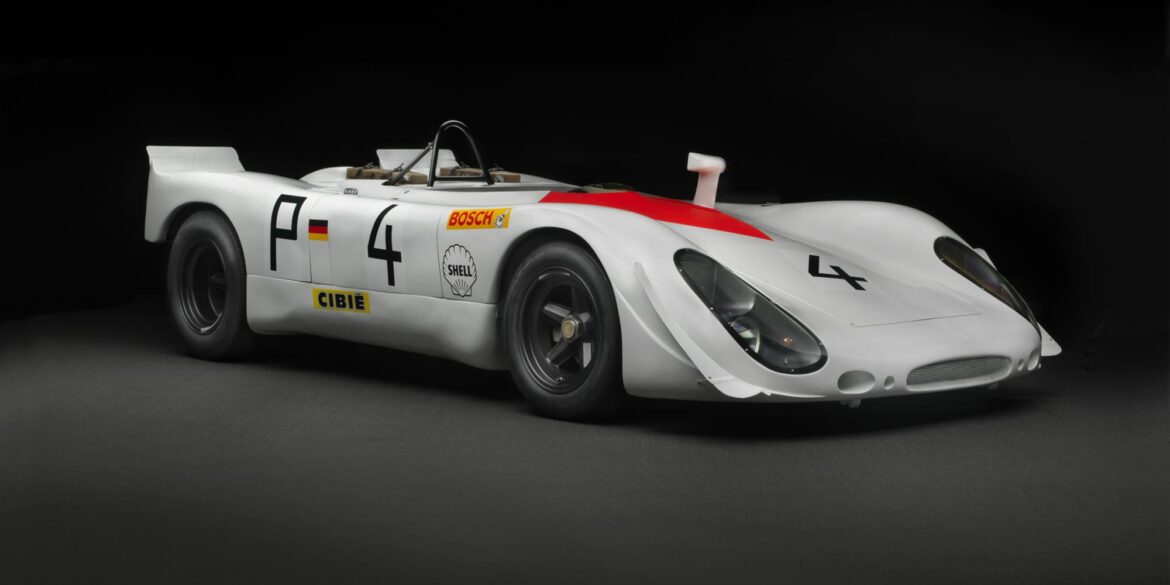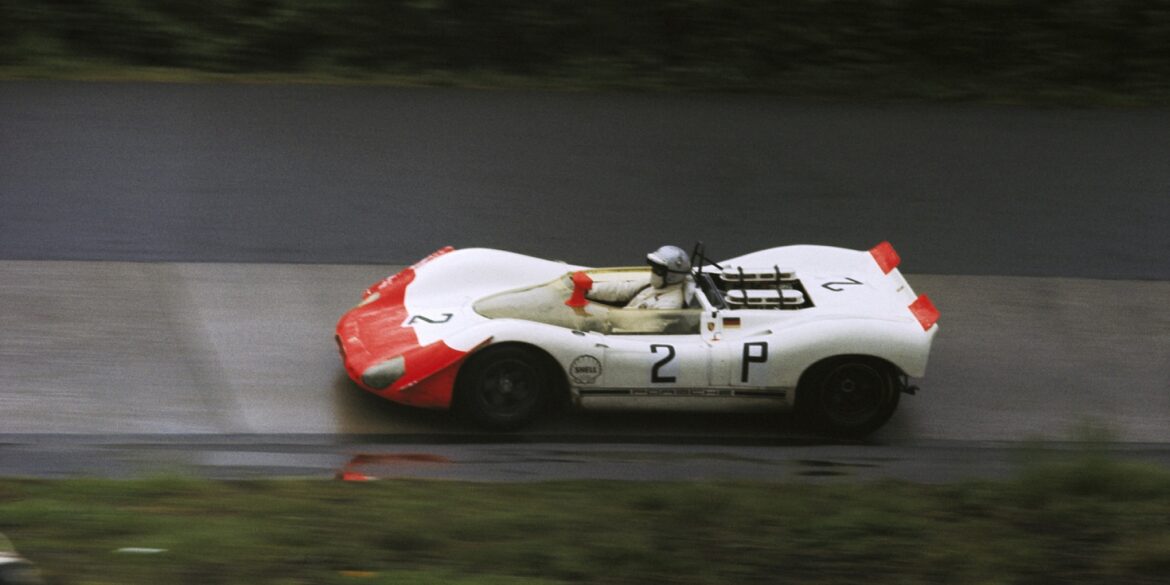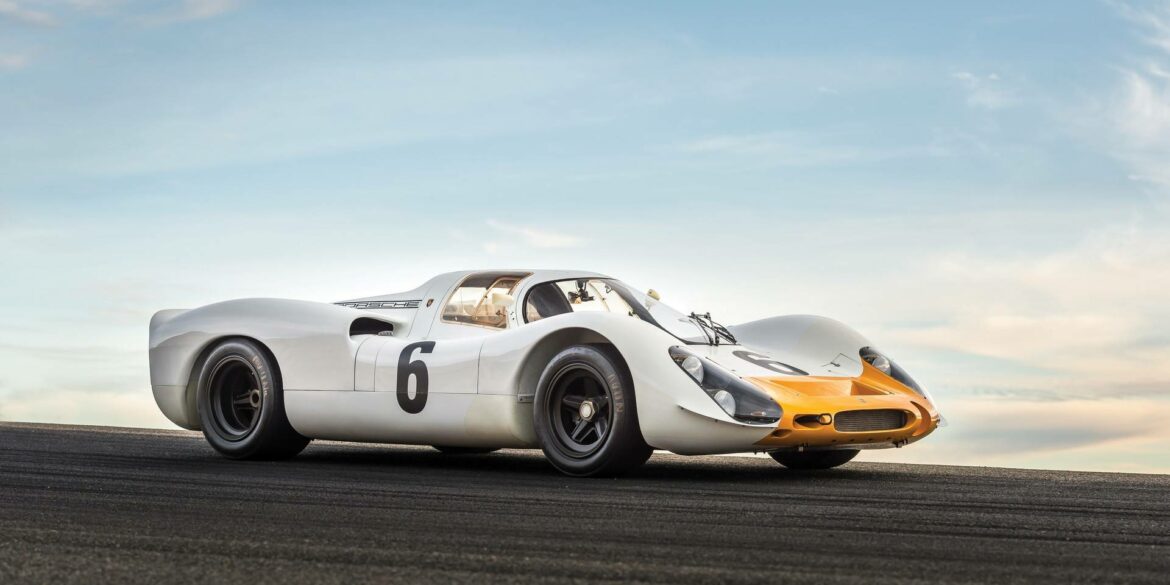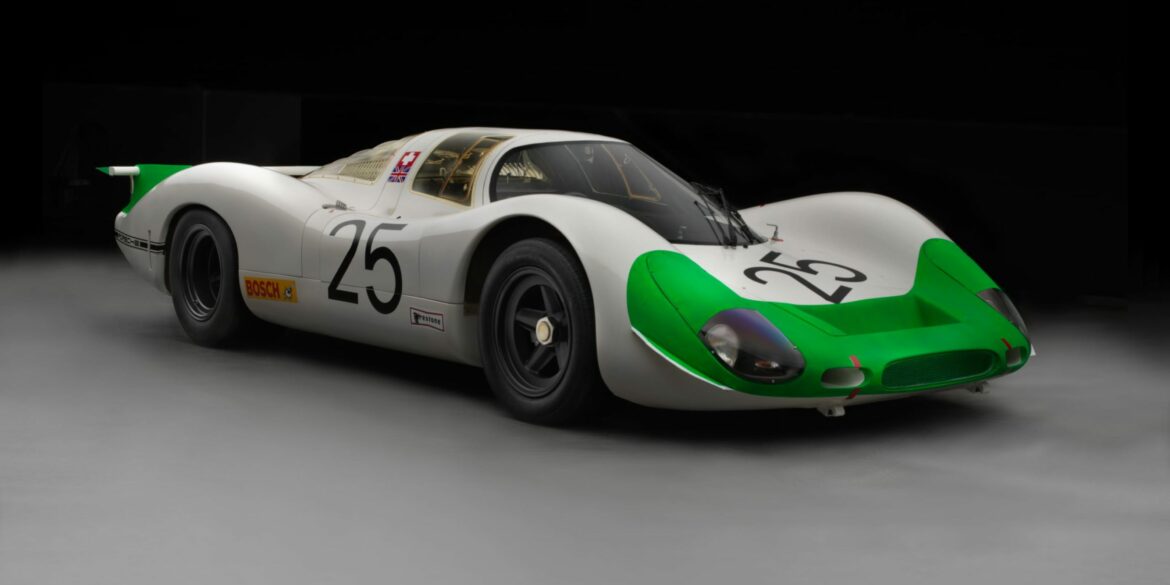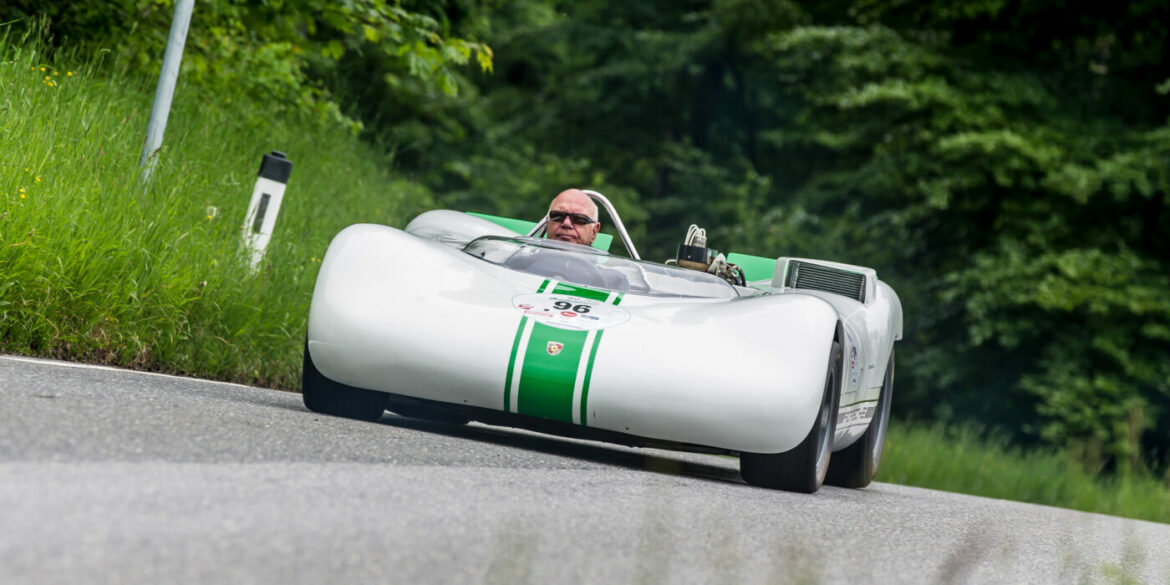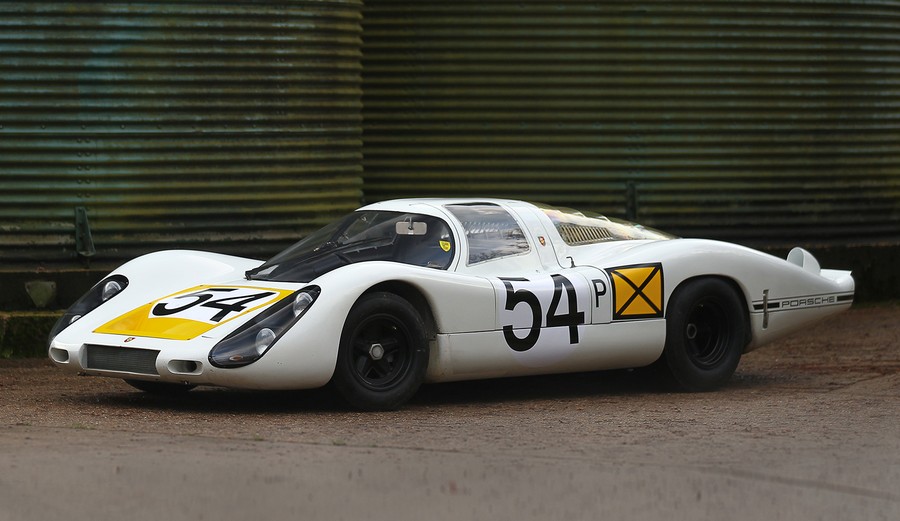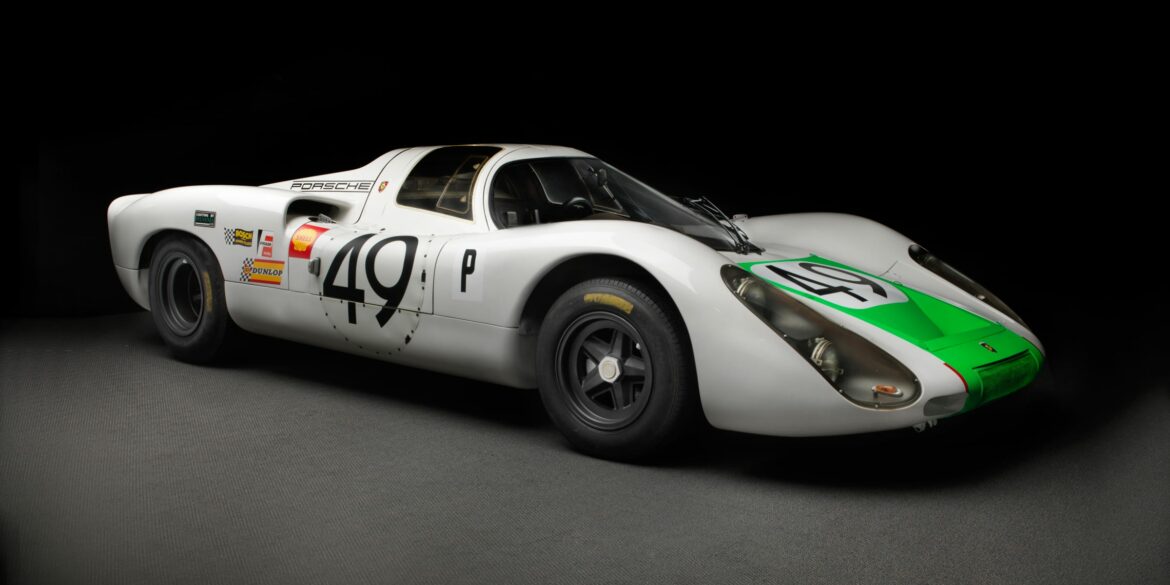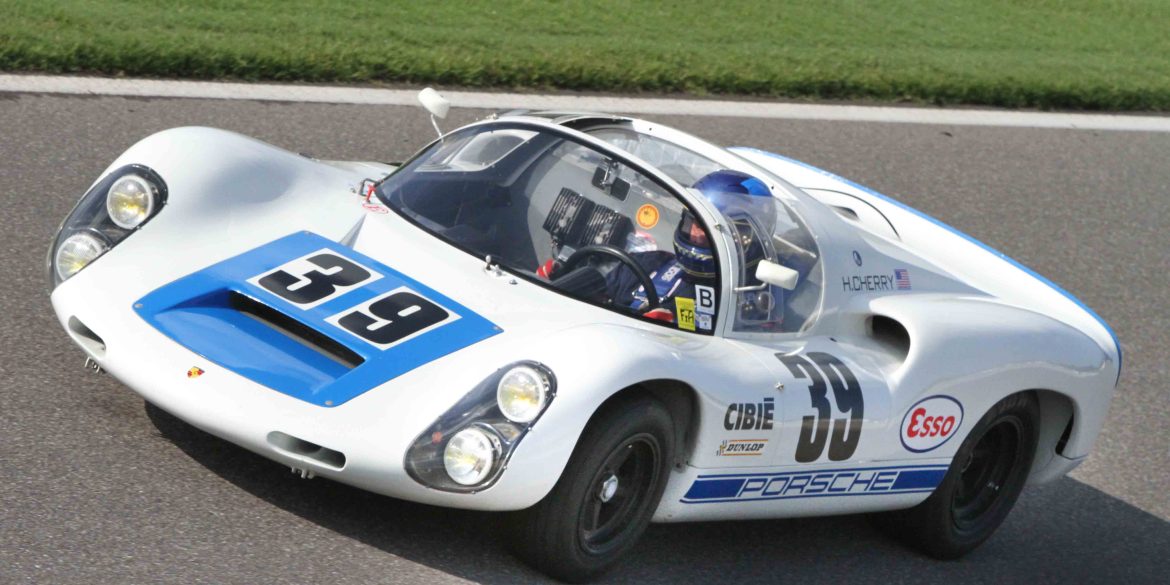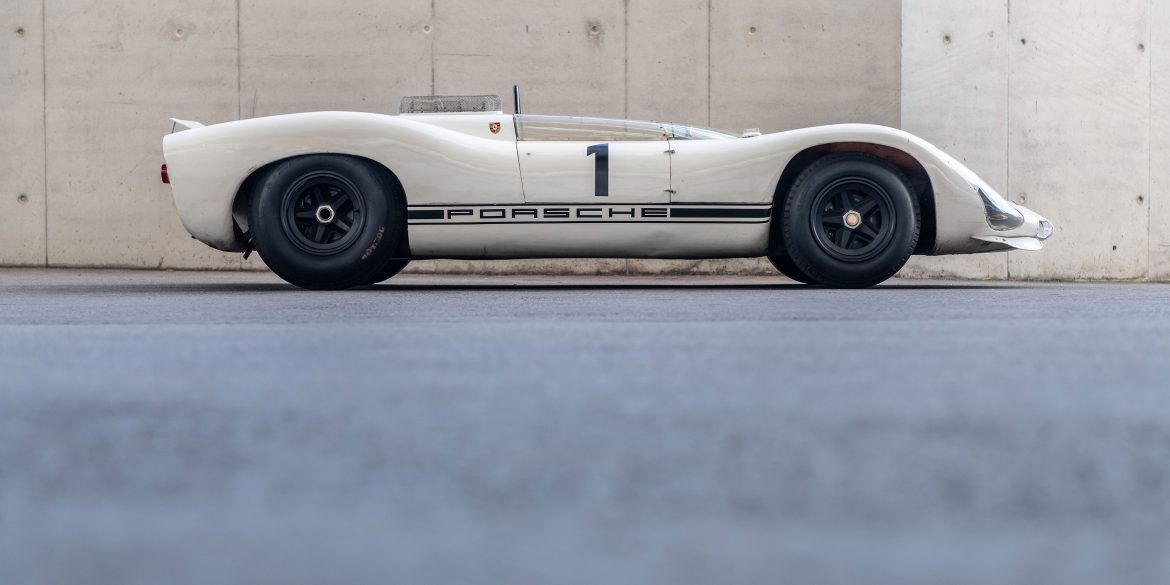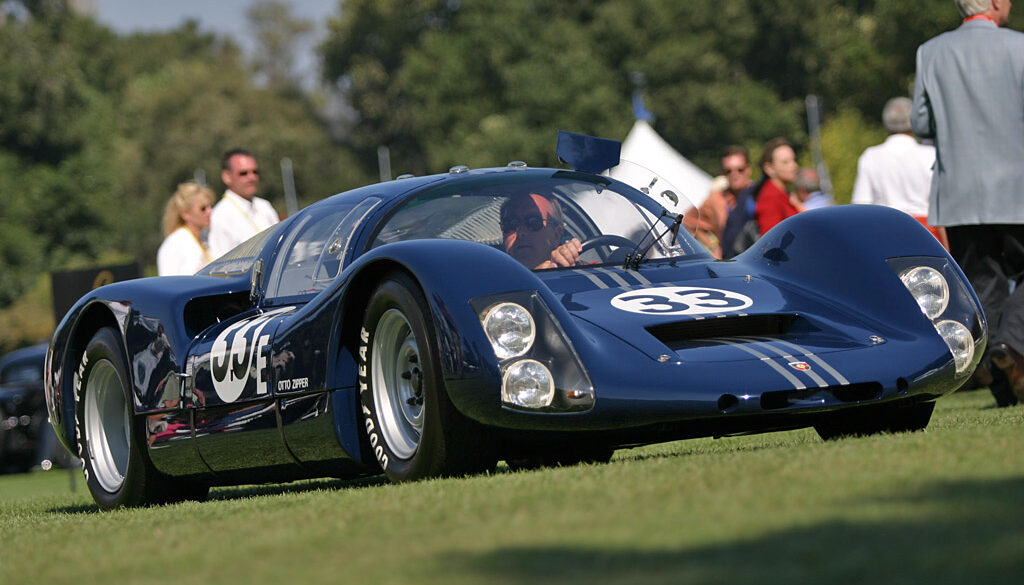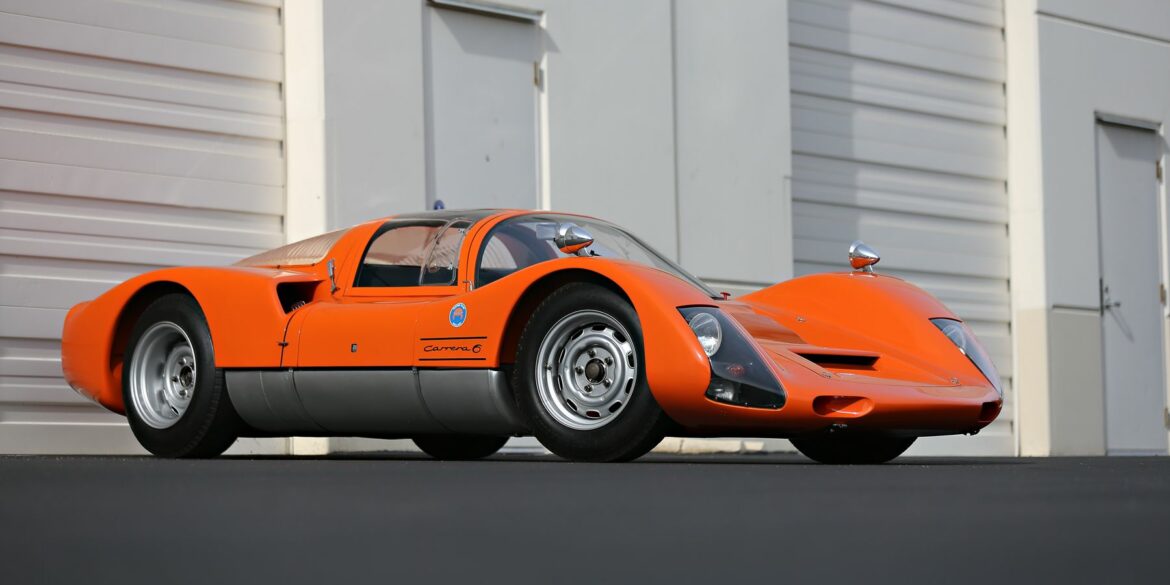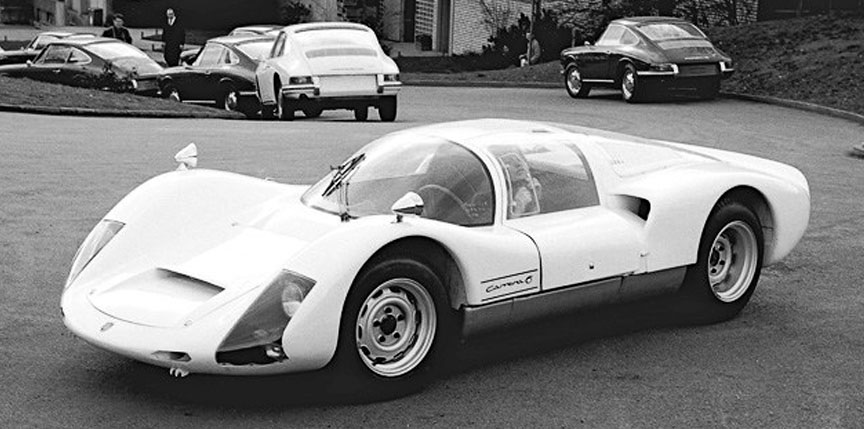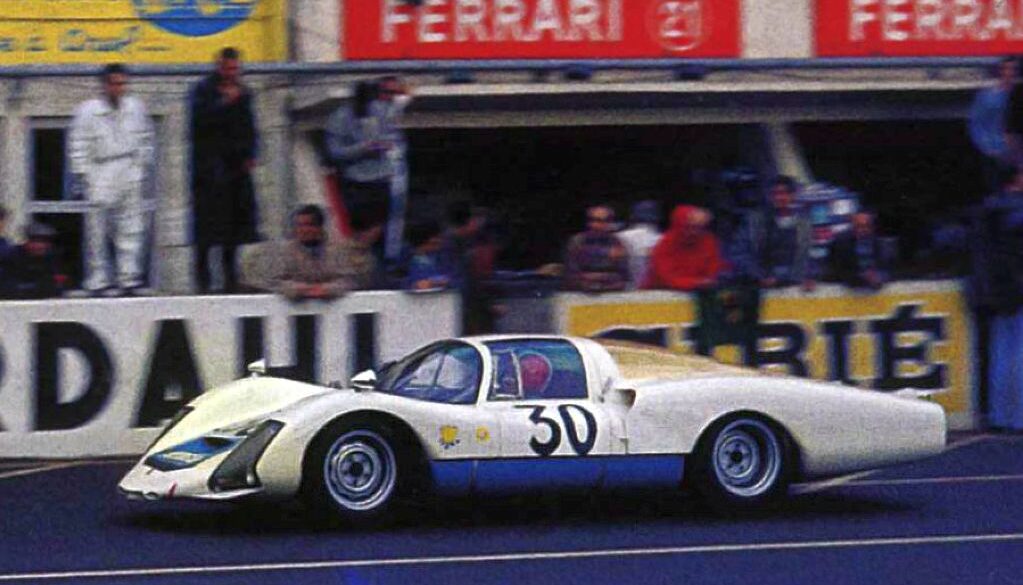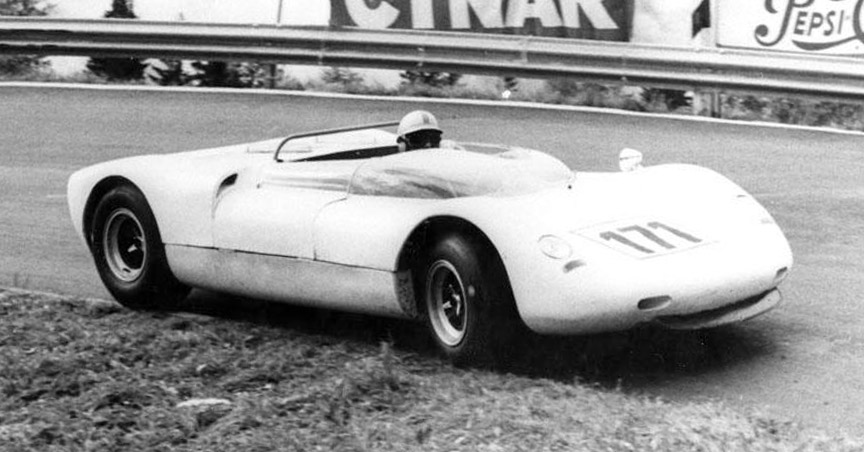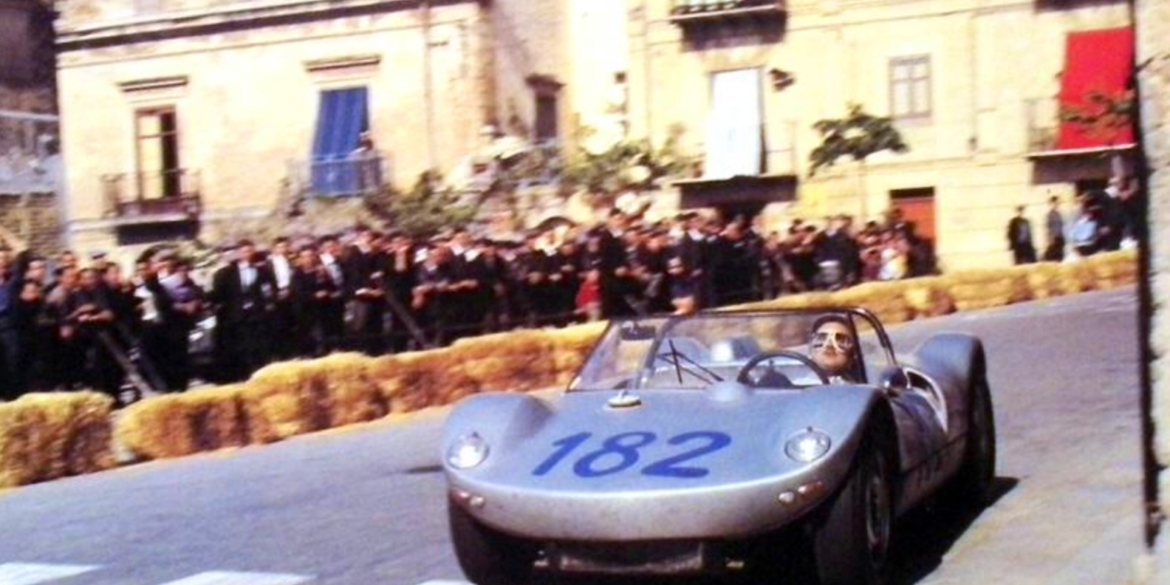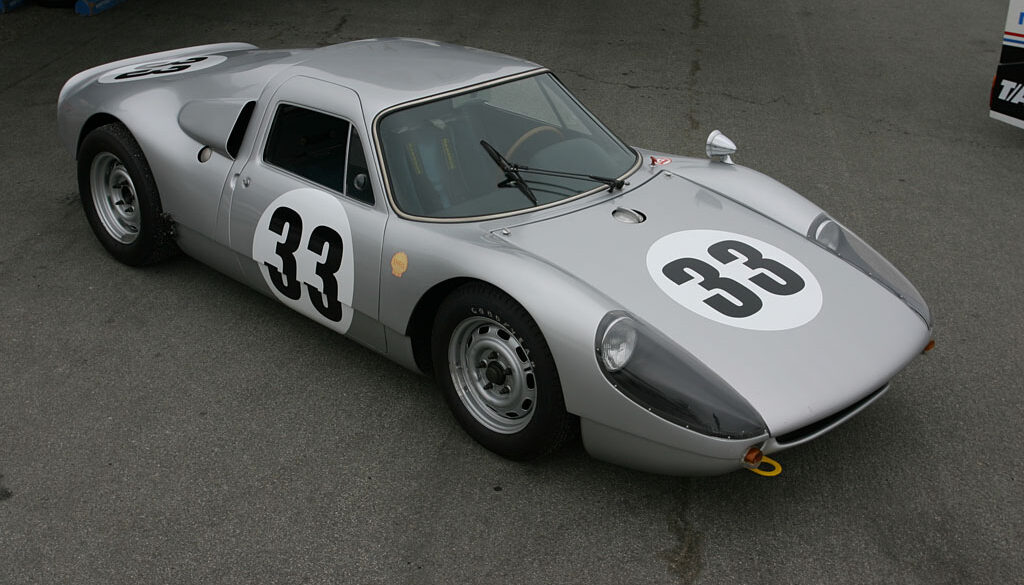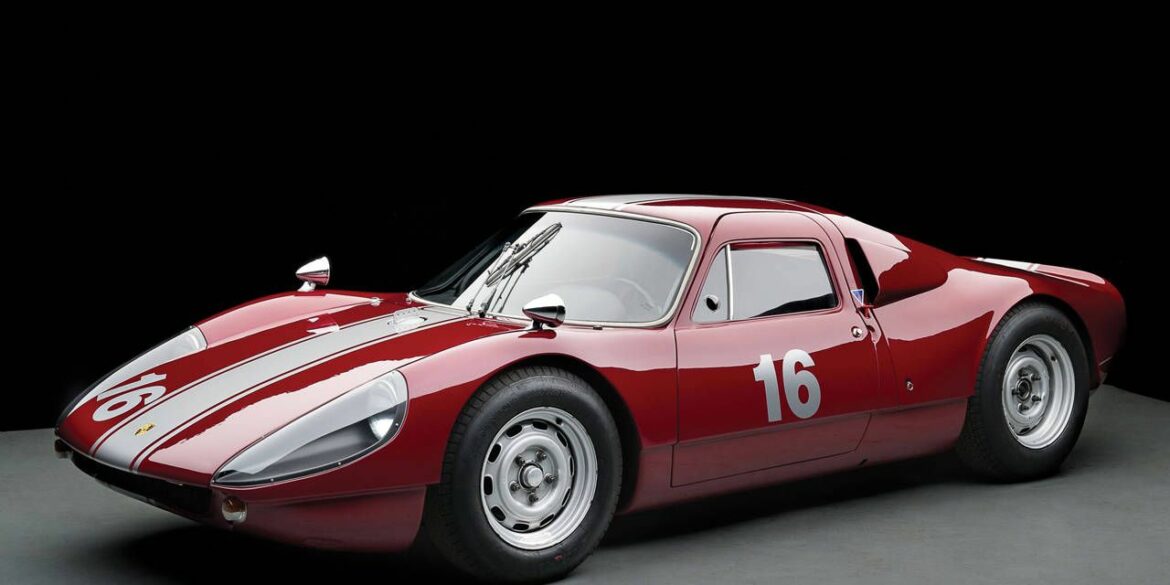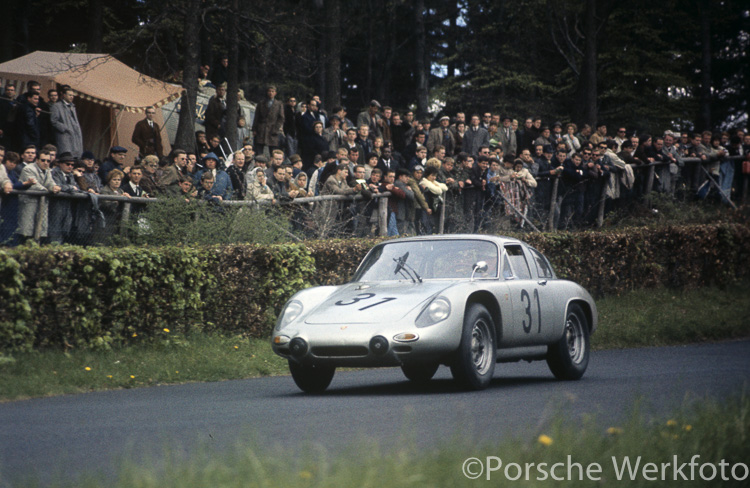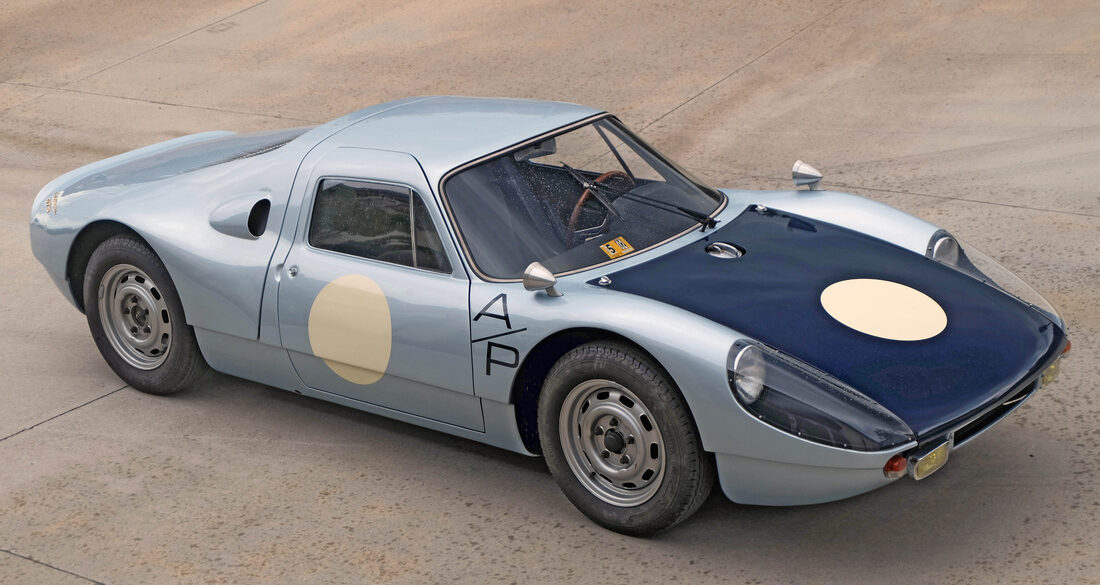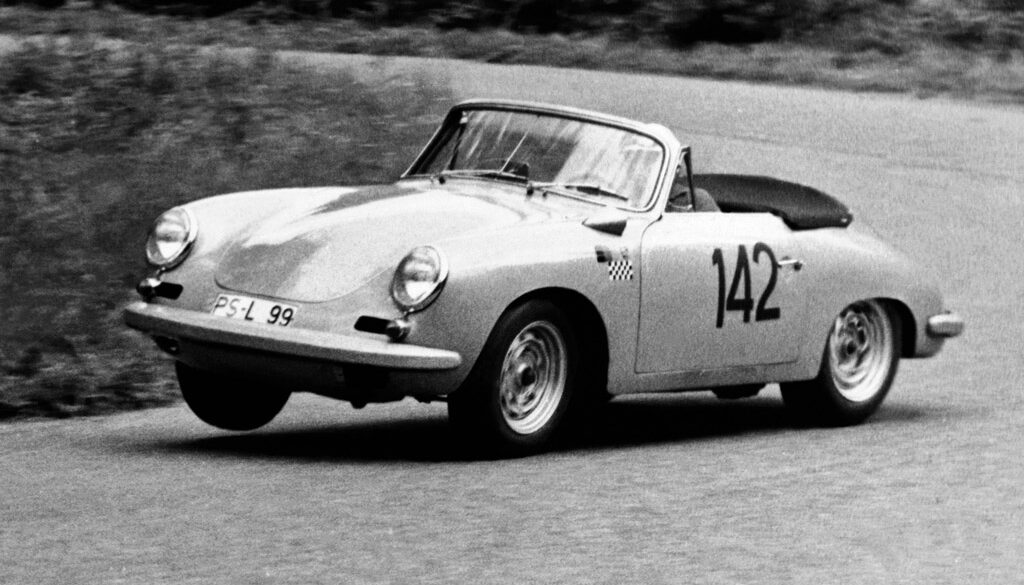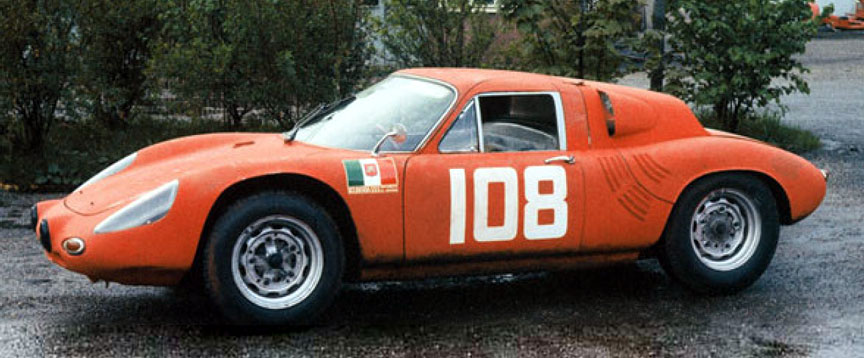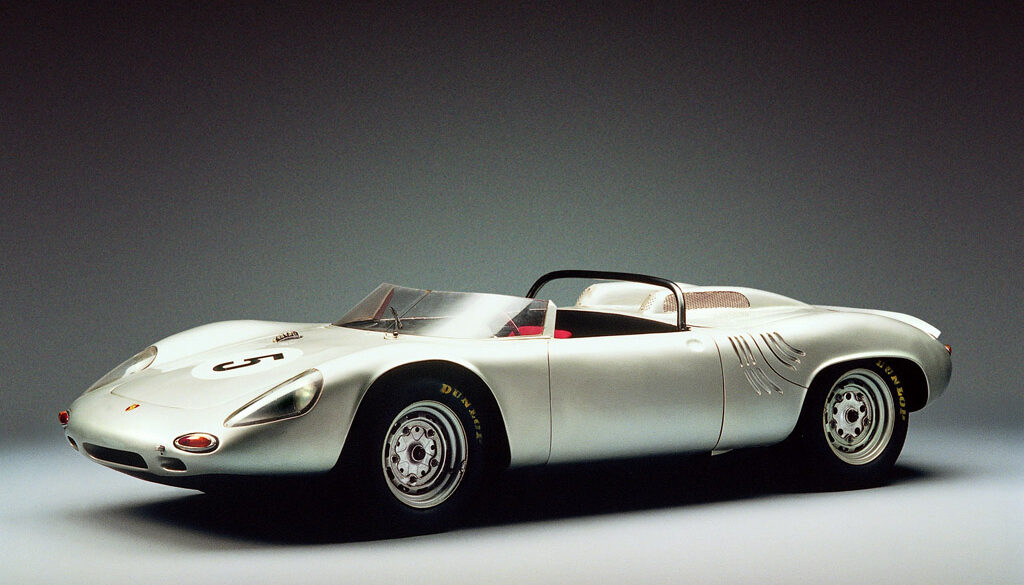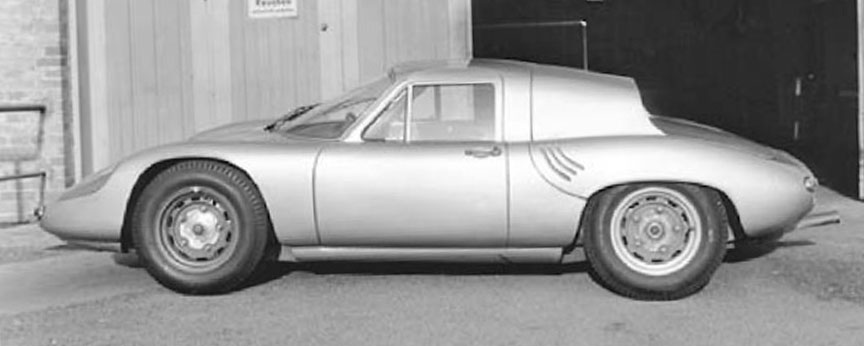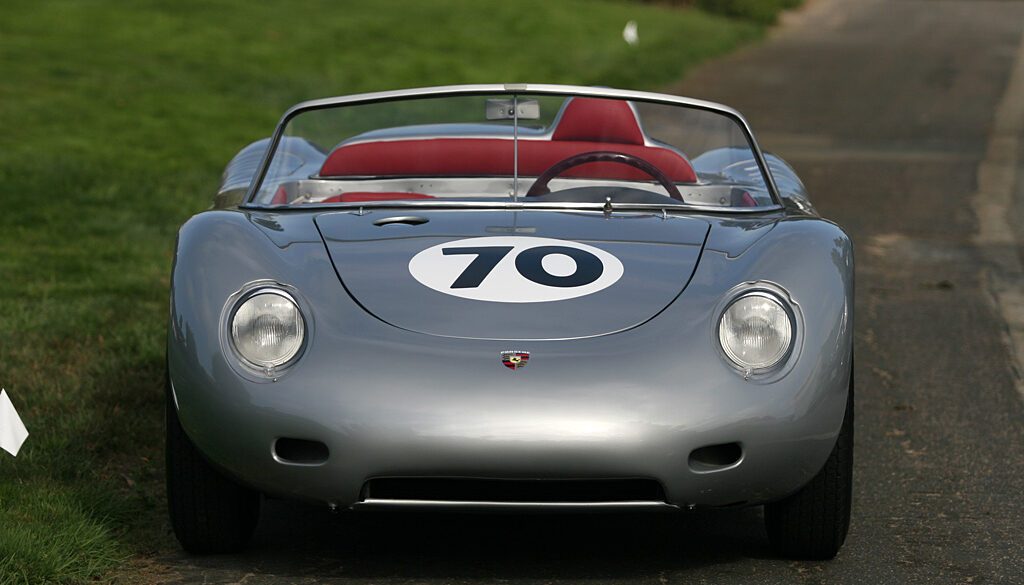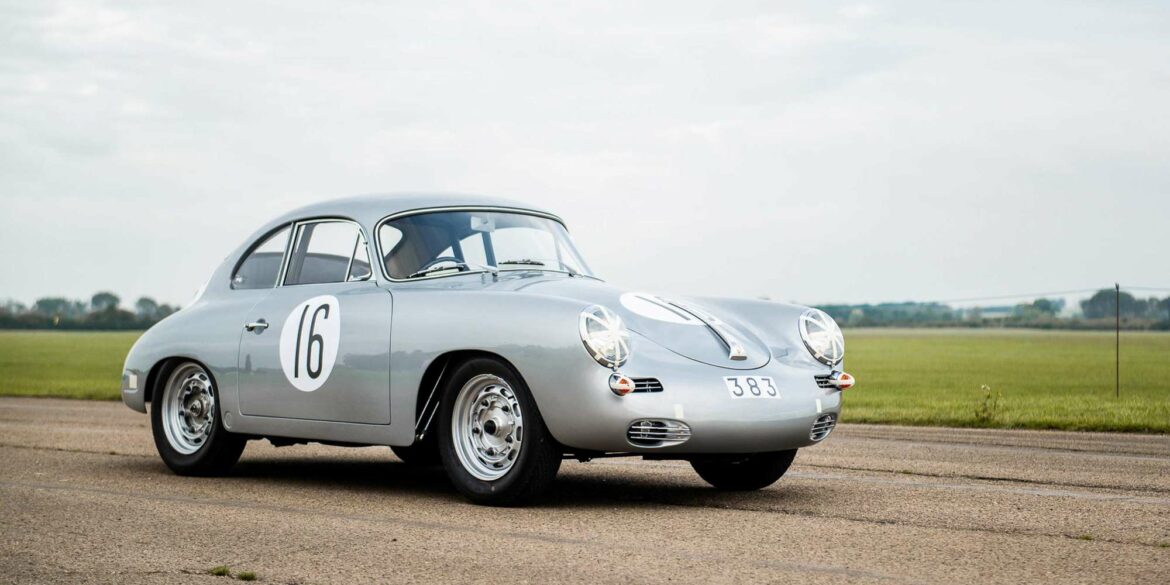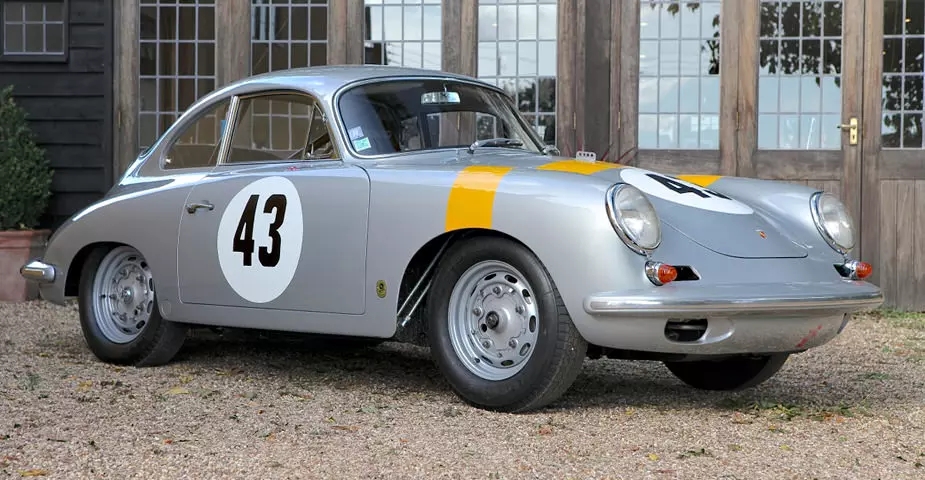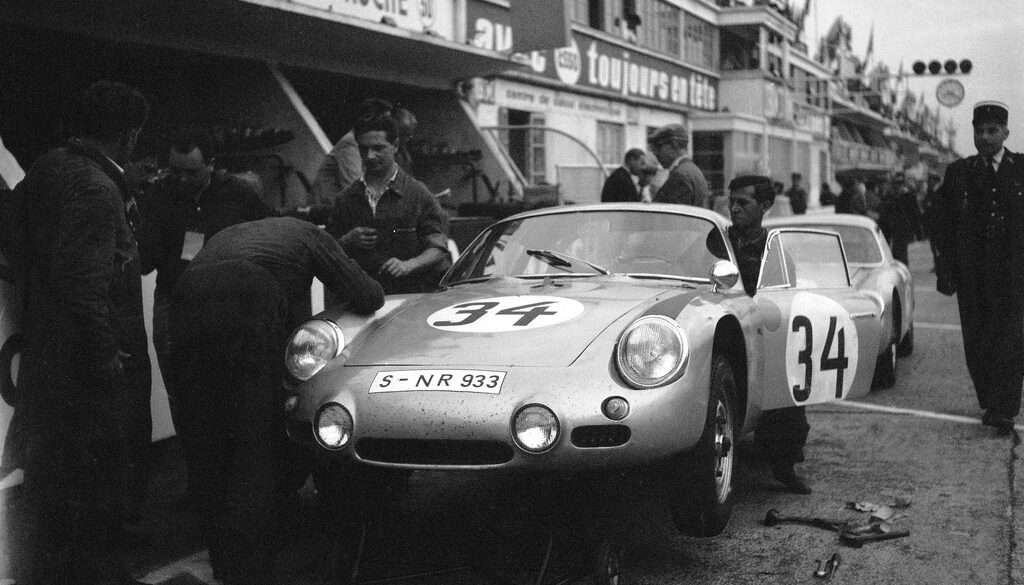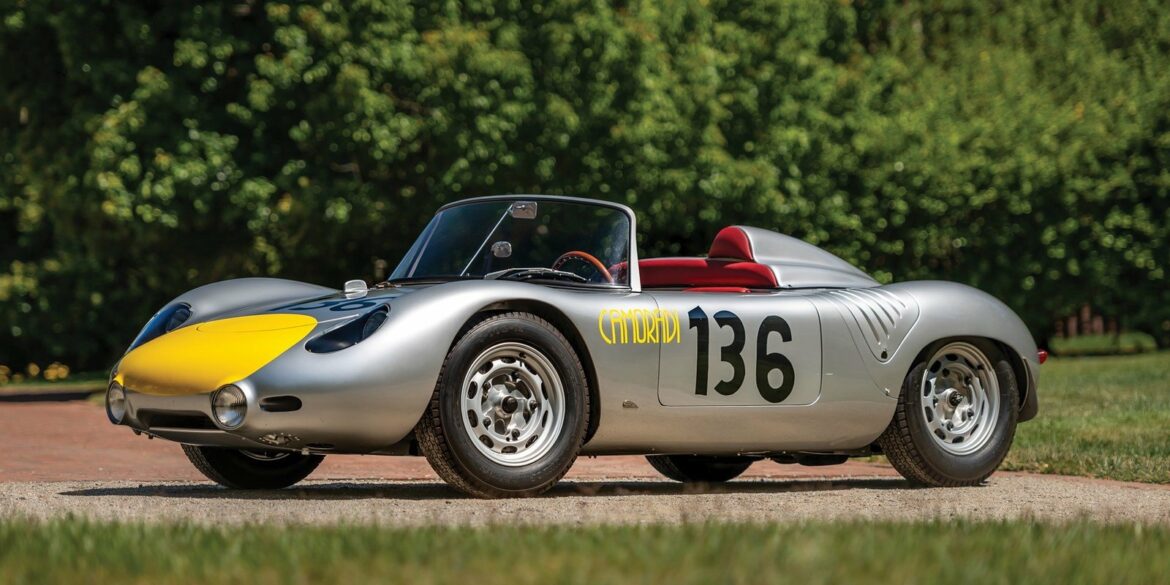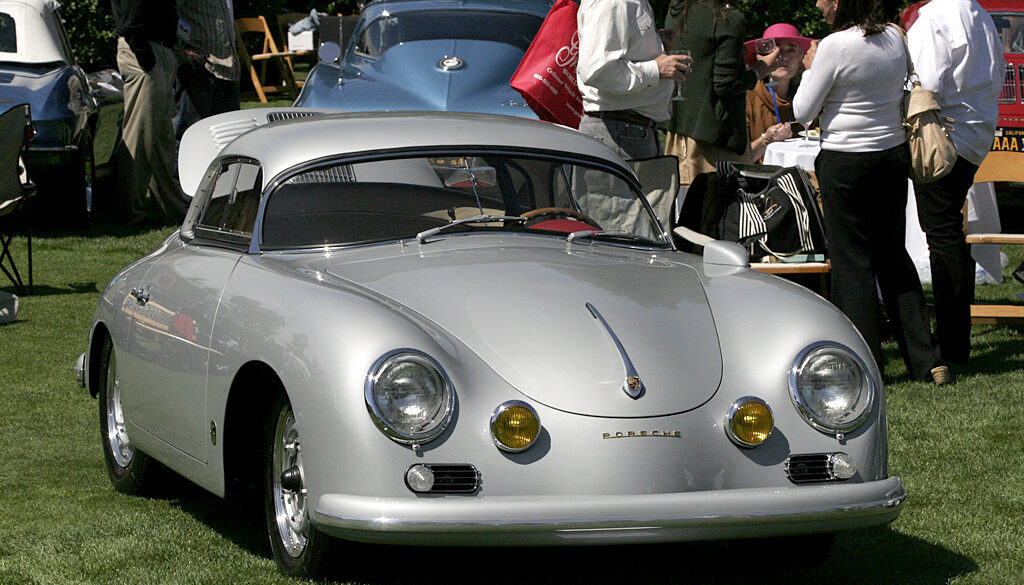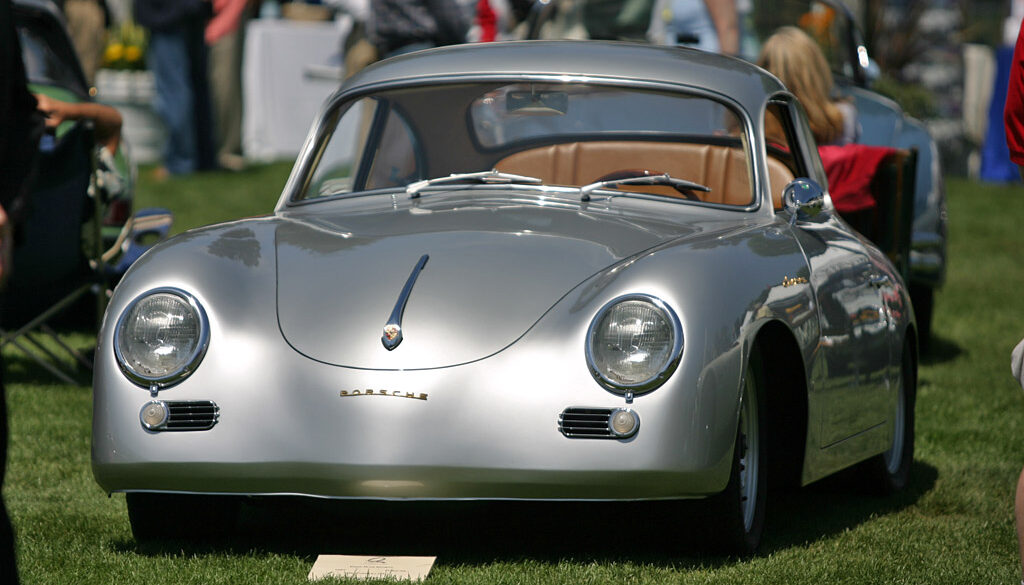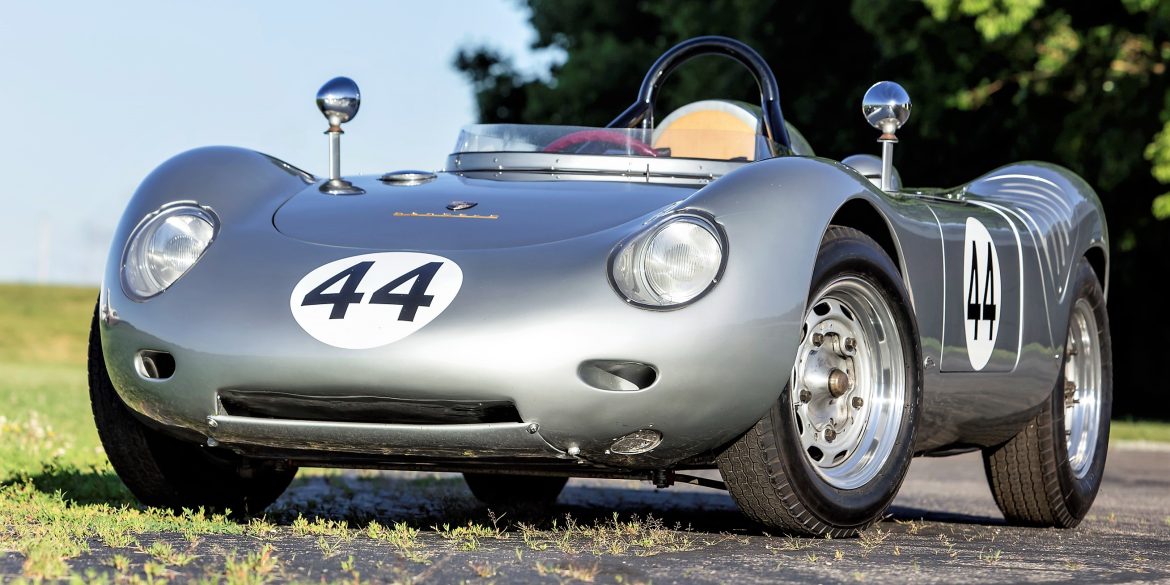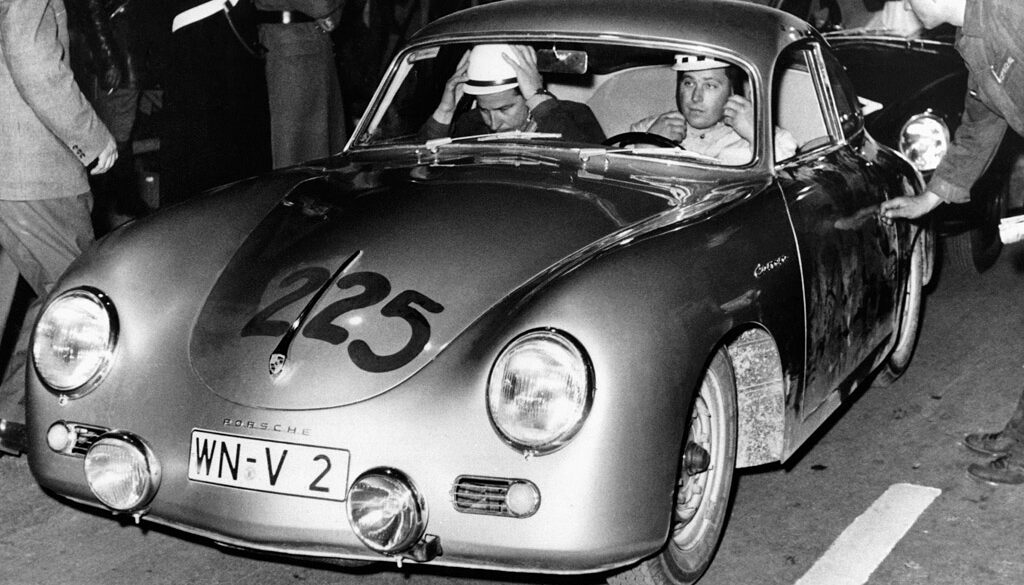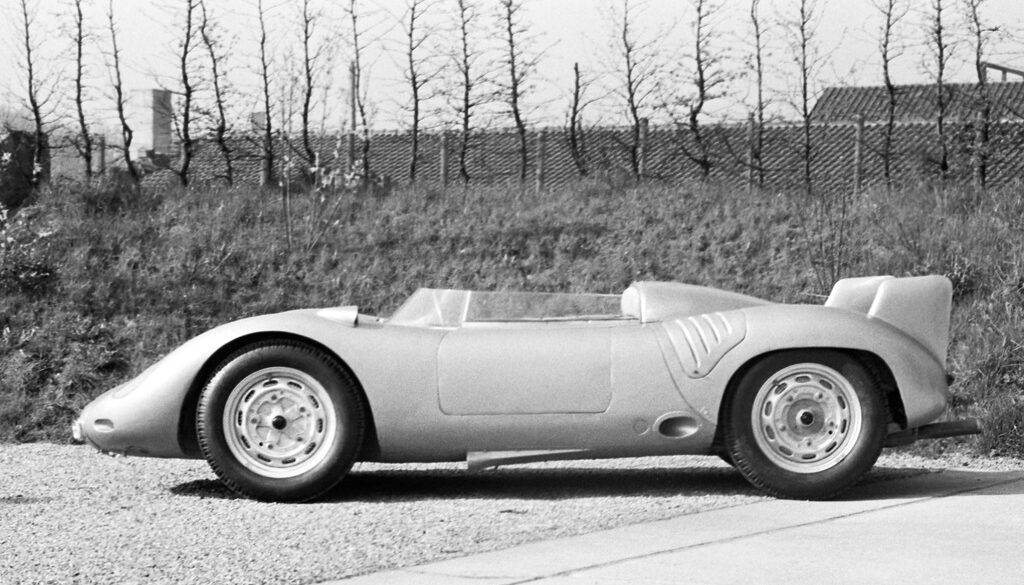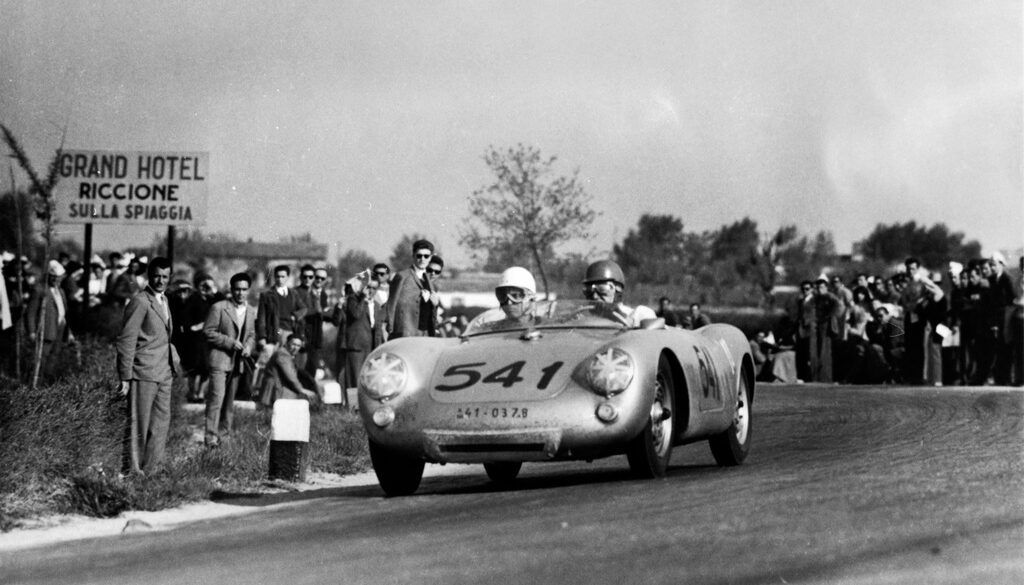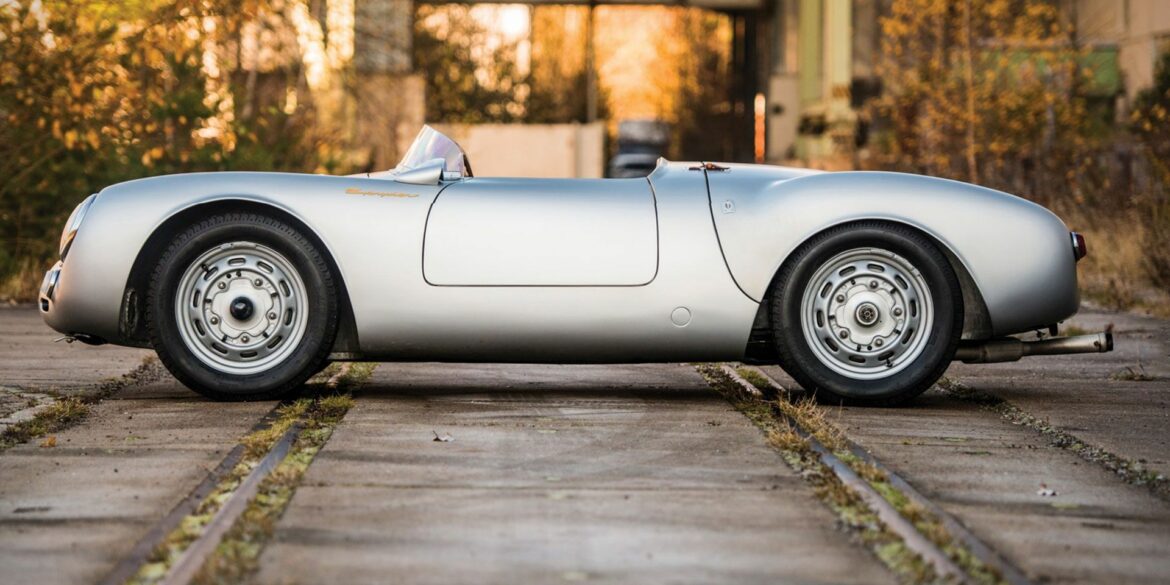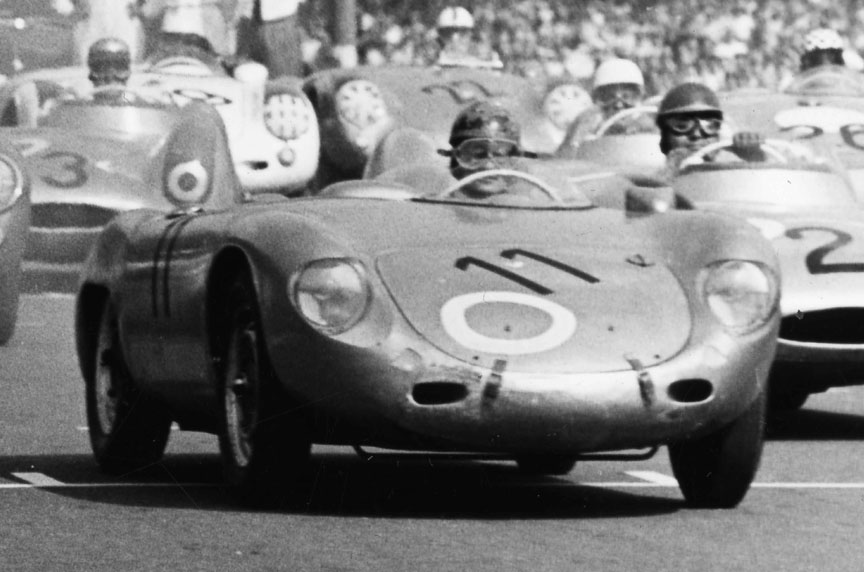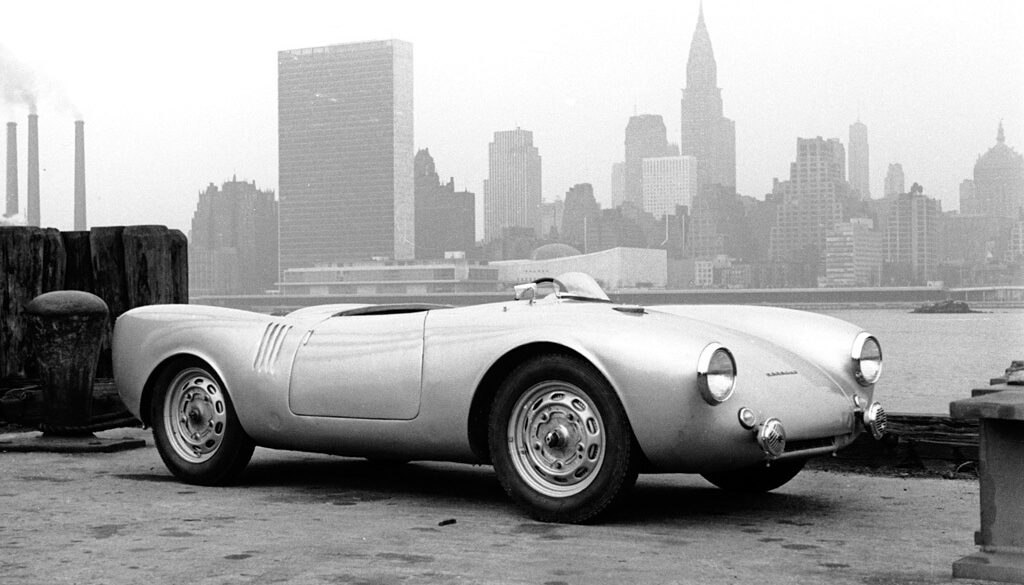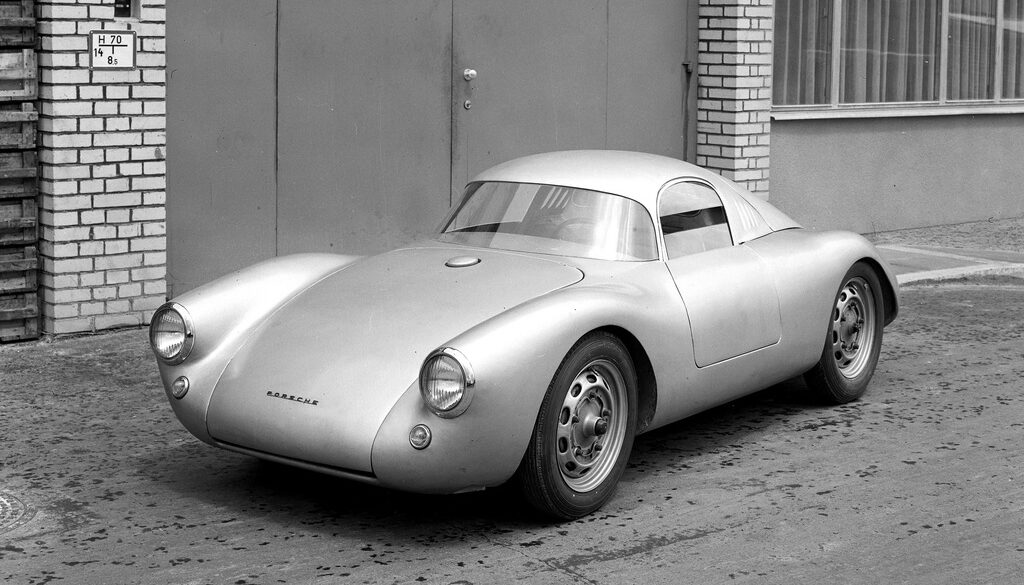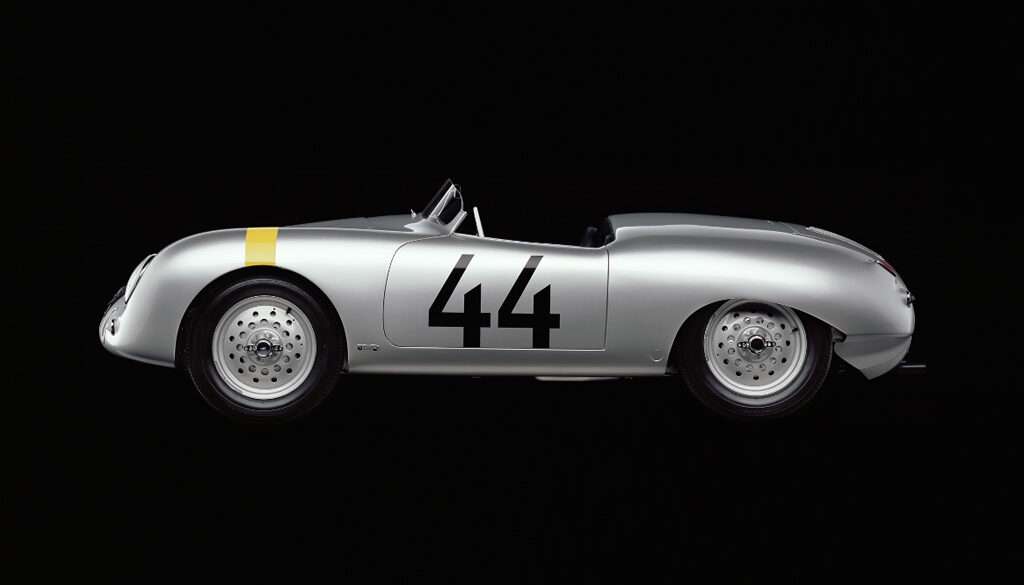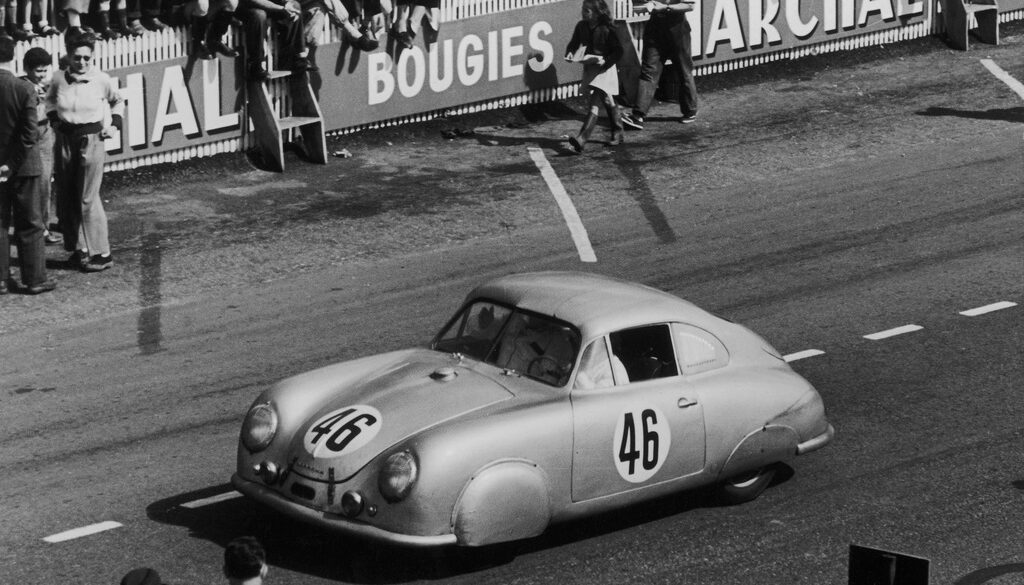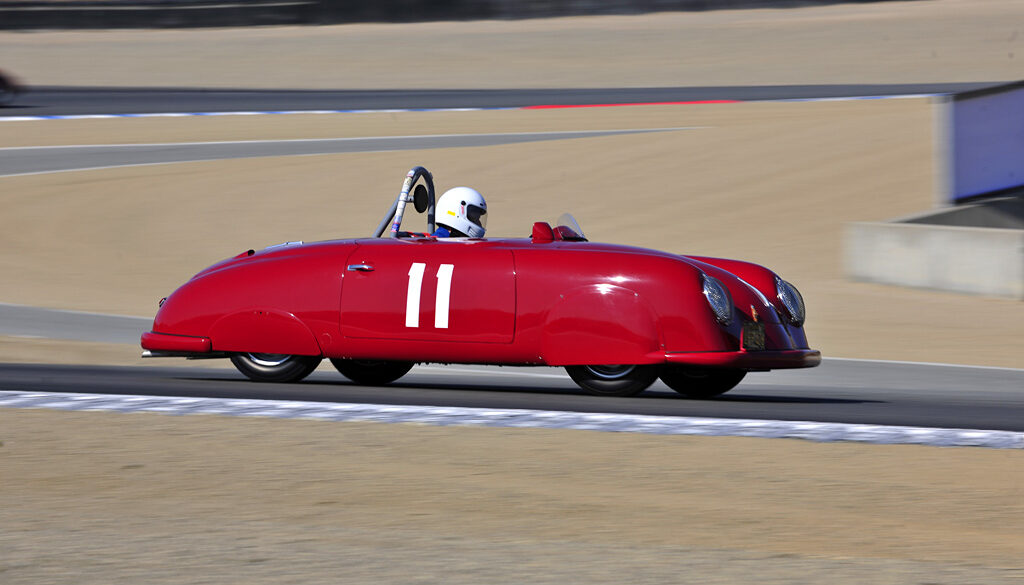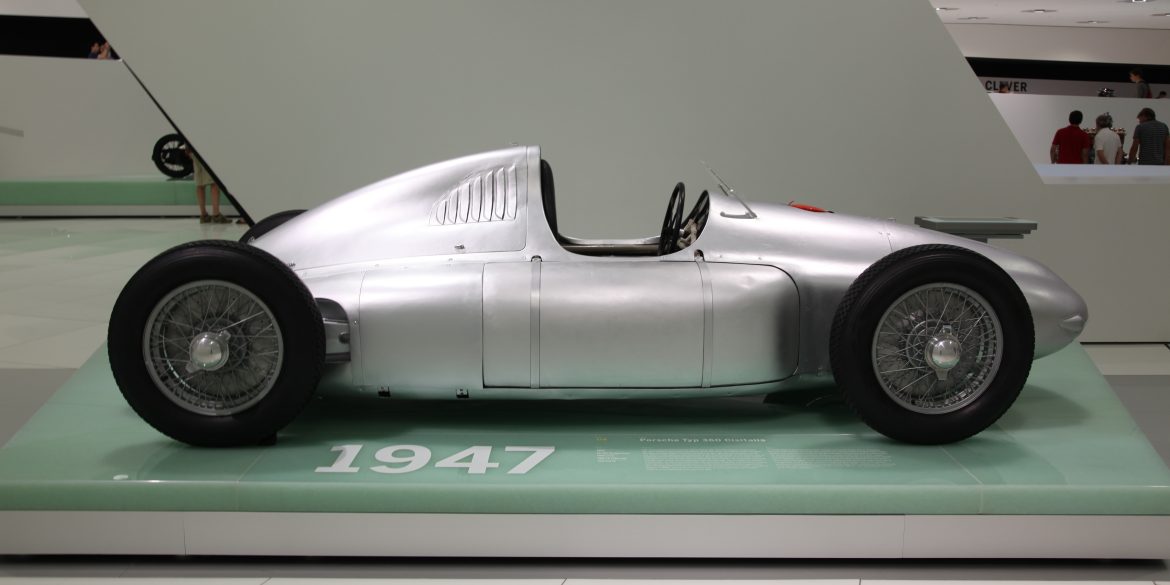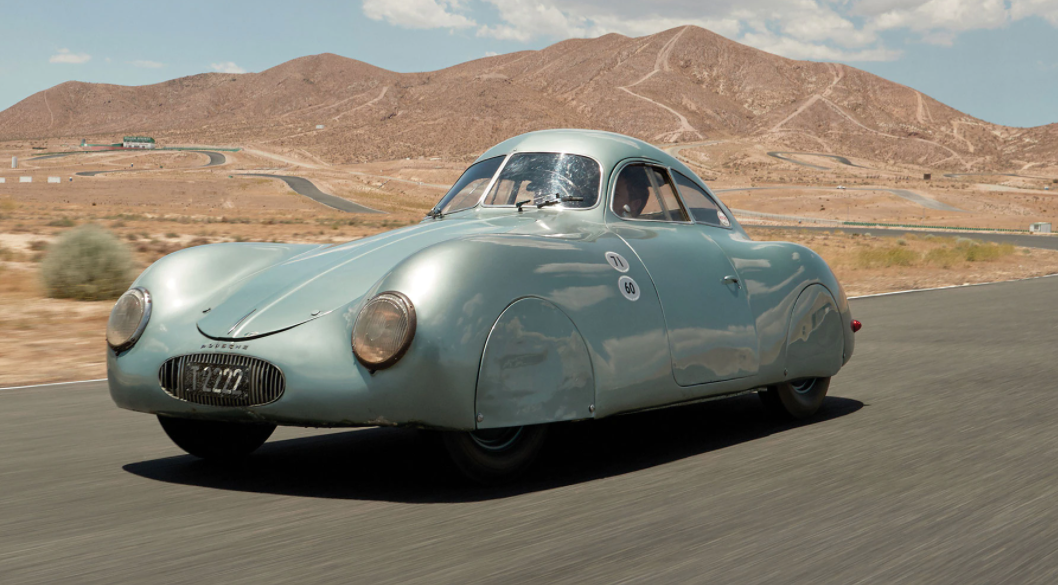Spark Racing Technology is responsible for a big part of the Porsche 99X Electric. This is the racing car Porsche fielded in Formula E 2019 season. Maximum performance in qualifying mode? 335 horsepower and 174 mph. Zero to 100 kilometers per hour is doable in 2.8 seconds, and the minimum weight including the driver is rated at 900 kilograms of which the battery is responsible for 385 kilograms. In race and attack modes, the output is restricted to 272 and 320 PS, respectively. The useable battery capacity is 52 kWh while maximum recuperation is rated at 250 kW.
With the car retiring after the 2017 LMP WEC season, the Porsche team decided to throw it a truly memorable send-off. Freed from any restrictions brought upon by strict regulations in the class it competed in, Porsche threw out the rulebook and established a new benchmark. Amongst the notable parting gifts was a significant horsepower bump, increasing the turbo V4 to 720 horsepower from 500 horsepower. Additionally, the electric motor received a 10% boost, now generating 440 horsepower. In total this gave the 919 a remarkable 1160 horsepower.
According to Porsche, it retained the monocoque from 2016, but 60 to 70% of the 2017 car was new, with the largest alterations being to its aerodynamic demands. This included a major redesign of the front of the 919 Hybrid with wider arches for the front wheels to make it less aerodynamically sensitive from small bits of discarded rubber from the track surface. Porsche remained in the 8 MJ (2.2 kWh) MGU category for the 2017 season. The engine was modified to be lighter and more compact, and Porsche stated that it was its most-efficient ever.
The third-generation 919 Hybrid (2016 MY) is powered by a turbocharged four-cylinder, two-litre petrol engine delivering almost 500 hp that drives the rear axle. The V4 engine, which is fully load-bearing, is turbocharged and features 4-valves per cylinder, DOHC, a Garrett turbocharger, direct fuel injection and an aluminium cylinder crankcase. In addition, the electric motor delivering more than 400 hp to the front axle. The latter is fed by two energy recovery systems.
The 2015 season Porsche released a new version of their 919 LMP1 prototype which was reshaped and significantly upgraded to the Premiere class which uses an 8 megajoule hybrid electric system. It follows the 2014 car which had competitive but lackluster year against Audi and Toyota. Combined with a 2 litre, twin turbo V4 gasoline engine is the 8 megajoule lithium-ion battery which powers the front electric engine for a total power output nearing 900 to 1000 bhp.
The Porsche LMP1-H (Le Mans Prototype Class 1, Hybrid) race car featured a hybrid system that consisted of a turbocharged 2.0V4 petrol engine at the rear axle and an electric motor at the front axle. The electric motor/generator unit (MGU) collected the energy from the front axle under braking and the AER exhaust energy recovery system operated on the exhaust gas - a separate turbocharger ran an alternator.
In 2007, 2008 and 2009 American racing driver Carl Fausett took his specially prepared and supercharged 1978 Porsche 928 to the Pikes Peak International Hill Climb and competed in the Open Division. Fausett placed third in the Open Division in both 2007 and again in 2009, where he was also the fastest 2WD car. At that time, much of the race course was gravel.
Following a development year with Penske Motorsports in ALMS, Porsche revealed the final version of their LMP2 contender for the 2007 season. Known as the 'EVO' model, it had a host of upgrades that made it suitable for customer-funded teams to successfully compete. This model dominated the P2 class at events like Le Mans and Sebring. It raced from 2007 till 2010 with strong results across the board.
The Porsche RS Spyder, internally called 9R6, exists only thanks to a customer order made in 2004 by Penske Motorsports, a subsidiary of Penske Racing. The 9R6 was built according to the Le Mans Prototype class 2 (LM P2) regulations and to be raced at the American Le Mans Series (ALMS) in USA and Canada. The ALMS was created in the spirit of the Le Mans endurance races, hence the name of the series.
The Porsche LMP2000 (also known as the Porsche 9R3) is a Le Mans Prototype racing car that was developed between 1998 and 2000, but never raced. One car was built, and it was designed around a modified version of Porsche's 3.5-litre V10 engine that was originally designed for Formula 1 in 1992. The project was canceled before the car was built, leading to various rumors about the reason for its demise.
The Porsche WSC-95 (sometimes referred to as the TWR WSC-95) was a Le Mans Prototype originally built by Tom Walkinshaw Racing. It was modified by Porsche from the original Group C Jaguar XJR-14 from which it derived,[1] and run by Joest Racing. The WSC-95 saw very little race action even though it won the 24 Hours of Le Mans in both 1996 and 1997 without being acknowledged as a factory supported project. Later upgraded to the Porsche LMP1-98 before being retired. Only two cars were ever built.
In 1992, Porsche introduced the 968 Turbo RS racecar which it developed to compete in the new ADAC GT racing series in Germany. The car was based on the 968 coupe with limited lightening due to the regulations of the series which had a 4kg/bhp power/weight ratio limit. The car featured a K27 turbo boosting the 3.0 litre, 4 cylinder engine and an 8V head, similar to the 944 Turbo S, rather than using the 16V 968 head.
The 959 took both first and second place in the 1986 Paris-Dakar rally. For 1986, the Dakar Porsches finally got all the upgrades from the 959 project, including the active four-wheel drive system offering four driving modes adjusted by the computers. This gave Porsche a 1-2 finish, with supporting 959 Dakar engineer Unger Kussmaul crossing the line at sixth. Once the champagne had dried up, Porsche deemed its Dakar program accomplished.
The Porsche 961 was the racing version of the 959 supercar. While the 959 rallye car was also internally called 961, publicly only the circuit racer was called 961. Only one 961 was built. It had 959 prototype chassis number which in turn was from the 1985 911 Turbo chassis number sequence: WP0ZZZ93ZFS010016. The 961 was entered at the 1986 Le Mans 24 hour race. Uncommonly, the 24 hour race was scheduled for May 31-June 1 that year, two weeks earlier of the typical Le Mans weekend in the middle of June.
In late 1985 Porsche developed the 944 “Weissach turbo cup race car” to provide amateur enthusiasts with a cost effective entry into motorsports. Porsche initially designed to participate in a single-marque racing series run in conjunction with 1986 German ADAC Supercup races, but soon spread to Italy, Spain, Belgium, Austria , USA, Canada and even Czechoslovakia. The cars were modified extensively for racing duties, including taking out a lot of weight.
The Porsche 962 arrived on scene in 1984 as essentially a Porsche 956 for the IMSA/US market. A biturbo version was used in competition racing in Europe, while an IMSA version with a turbocharger featured in North America. The 962 C was based on the 956, with a 120 millimetre longer wheelbase and competed in LeMans. It differed from the IMSA version. The driver trio Stuck/Bell/Holbert was victorious at Le Mans in 1987. Porsche offered the 962 to privateers to race on their own and they were hugely successful.
In 1984 Porsche offered a full works-specification car known as the 956B. This provided the New-Man Joest Racing team with a winning formula and they dominated the 1985 24 Hours of Le Mans with a resounding victory. One of the main differences between the customer 956 and the 956B was the Bosch Motronic engine management. This allowed more precise ignition and injection which in turn provided better economy and more power.
The Porsche 956 was a Group C sports-prototype racing car designed by Norbert Singer and built by Porsche in 1982 for the FIA World Sportscar Championship. It was later upgraded to the 956B in 1984. In 1983, driven by Stefan Bellof, this car established a record that would stand for 35 years, lapping the famed 20.832 km (12.93 mi) Nürburgring Nordschleife in 6:11.13 during qualifying for the 1000 km Sports Car race.
In 1981 Porsche developed two 944 prototypes to succeed the 924 GTPs which raced the 1980 24 Hours of Le Mans. To coincide with the release of the 944 in fall of 1981, Porsche prepared a GTP version to promote the car before the launch. The GTP was equipped with a special Type 949 cylinder block with dry sump lubrication, KKK K28 turbocharger and an air-to-air intercooler.
The Carrera GTR was the ultimate 924 Street/Race Car in 1981. The GTR had larger flares, larger wheels and tires, improved brakes and a whopping 375 horsepower from the 2.0L turbocharged dry-sump engine. At $75,000, the GTR would have cost over $200,000 in today’s money, but what you got was a 180 mph screamer for the street, but in full race trim.
Because the traditional pre-test is cancelled in 1981, Porsche is forced to start at Le Mans without testing. None the less, the race ends successfully: Jacky Ickx and Derek Bell win almost an hour ahead of the second placed competitor – right in time for the 50th anniversary of Dr. Ing. h.c. F. Porsche AG, and 30 years after Porsche’s first start at Le Mans.
GTP cars were produced in 1980, three of which were special LeMans race cars. The cars had the 2.0L turbocharged 924 engine with a huge front-mounted intercooler and increased boost to increase output to 320 HP and 285 lbs/ft of torque. The engine used Bosch mechanical fuel injection and with a weight of 2050 pounds had a top speed of 180 mph. It was third in the GTP class, with an 6th place finish overall, and another finished fifth in class and 12th overall.
These cars were designed by the factory to race in SCCA D Production Championship starting in 1979. The Porsche project number of these race cars was 933. Only 16 were built by the factory. However, if you had the right connections, you "could" buy the parts as a kit from Porsche to convert your street car into a fully race-ready 924.
As a top-secret project, the Porsche Museum workshop and the Porsche Heritage department worked on a special front-engined sports car from 1981. 40 years ago, starting on May 15, this car competed in the Deutsche Rallye-Meisterschaft (German Rally Championship). Behind the wheel was non other than Walter Röhrl, with Christian Geistdörfer next to him.
The 935/78 was the ultimate expression of the 911 factory race car before Porsche officially withdrew from motor sport. Raced under the Group 5 silhouette series, great liberties were taken with the design and the result was nicknamed ‘Moby Dick’ for its large size and huge overhangs. The 935/78 was built under Porsche's Chief Racing by Norbert Singer for high speeds at Le Mans. Due to the advanced shape of the car 227 mph or 366 km/h was possible.
The 935 ‘Baby’, based on the successful 935 Group 5 race sports car, was created in 1977, after only four months of development,, specifically for entries in the small division (up to 2000cc) of the German Sports Racing Championship. Compared to the Group 5 car, this little 935 had a six cylinder turbo engine of 370bhp, reduced to a displacement of 1.4-litres. A thorough diet helped ‘Baby’ meet the minimum weight of 750kg as dictated by the rules.
The 935/77 was a result of relaxed rules and the car got a completely new suspension. The mirrors were incorporated into the front fenders and the rear window had a new angle. The 935/77 was visually very pleasing. While the 935/76 had a single turbocharger, the 2.85-litre engine of the 935/77 had two turbochargers. There was also a "baby" 935/77 built with a smaller 1.4-litre turbocharged engine to compete in the national German DRM series under 2 liter class.
The Group 4 racer based on the 911 Turbo (930) was called 934 and the Group 5 Porsche was called 935. The first version of the 935 looked similar to the 911 Carrera RSR. The first customers for 935 were Martini Racing and Kremer Racing. The Martini car was a full factory development, while Kremer made its own enhancements already before the first race. By 1977, the 935 was sold as a customer car for these series to race against cars like the BMW CSL.
Porsche decided to end its 20-year history of factory sports car racing and sold the 908/03 cars to customers. In 1975, some 908s were fitted with turbocharged engines, similar to those used in the Porsche 934 GT car. Several customer-908s were upgraded with 936-style bodywork. The Porsche 908/80 Turbo of Joest and Jacky Ickx which finished 2nd in the 1980 24 Hours of Le Mans turned out later to have a real Porsche 936 chassis, though.
The 917/20 Turbo is a confusing car - its chassis number reads 917/30-001, but it is not the real 917/30. In its first race it was called as the 917/10 Turbo. Sharp eye can detect that it was not just the 917/10 Turbo, but an evolution of it. At the same time it was not the evolution of the 1971 Le Mans 917/20. Still, the car should not be called as the 917/30 to distinct it from the "real" 917/30 Can-Am racers and in 1974 it was decided to call it as the 917/20 Turbo.
The final evolution of the 917 was created after Ferdinand Piëch had left the Porsche company in 1972. Two complete 917/30 Can-Am cars with 2500 mm (98.4") wheelbase were made for Roger Penske Enterprises racing team. They were chassis 917/30-002 and 003. The 001 car was not a real 917/30 and was raced in Europe at the Interserie. The Can-Am 917/30 had a 5.4-litre flat 12-cylinder twin-turbo engine which produced so much power that nobody really knew how much.
The first turbo-Porsche, Can-Am winner 1972, Interserie winner 1972, 1973. The first ever publically seen turbocharged Porsche was the 917/10 Turbo with chassis number 917/10-011. It was entered for the June 11, 1972 Can-Am Mosport race. Mark Donohue was fastest in the qualification with it, but scored second in the 80 laps race after the 8.1-litre McLaren. The Porsche Turbo era had begun. Eight 917/10 were racing in 1972 in Can-Am and in Interserie.
The 1972 917/10 was similar in its design to the 908/03, but, of course, had the 12-cylinder engine instead of the 3-litre flat-8. The 917/10-72 was first seen at the Interserie Nürburgring race on April 3. It was the chassis 004 car of Leo Kinnunen and Keimola Racing Team AAW. Kinnunen scored 4th in the first race, but would win the championship by the end of the season. The second Interserie race was at Monza on May 1st and that race was won by chassis 917/10-002 and Willy Kauhsen.
Jo Siffert was the first to take the 917 to Can-Am championship. The car he used in 1969, was the 917 PA Spyder. Although he participated in one Can-Am race in 1970 with a 917 K, that season he skipped. He was back from mid-season 1971 and now with the 917/10. Only two 917/10 were created in 1971. The chassis 001 was used for testing and the 002 by Siffert. He took part in six races out of ten, managed podium finishes three times and scored 4th in the season, like in 1969.
An attempt to blend the best aerodynamic characteristics from both the short-tailed 917 K and long-tailed 917 LH led to the the 917/20, otherwise known as the Pink Pig. The car's combination of a long body, stubby face, and wide hips gave it a pig-like look, which inspired Porsche designer Anatole Lapine to give the car a pink paint job with butcher cut lines covering the exterior. It was hugely popular at the 1971 Le Mans race, and was the fastest in qualifying and nearly came in fifth place, before a brake failure caused it to crash before the finish line.
The “shark fins” on the tail gave the Porsche 917 KH 1971 greater directional stability and reduced wind resistance by 11 percent. In 1971 a veritable armada of six Porsche 917s started at Le Mans. The car with start number 22 was special. The white race car with the characteristic Martini stripes had the new “shark fins” on the tail that Porsche had first used in pretraining in April. This 917 was also the first Porsche with a magnesium tubular frame to be used in a race.
Like the 917 LH of 1969 and 1970, the 1971 version was also made for one race only - the 24 hours of Le Mans. The 917 LH-70 had already proved that the body was excellent for Le Mans, so the aerodynamical modifications for 1971 were mild. The front was modified and the rear wheels were covered. The 917 LH-70 that scored 2nd at the 1970 Le Mans 24H (chassis 917-043) was modified for the Le Mans 1971.
Porsche developed the S/T, of which 33 were built in 1970 and 1971, taking full advantage of new FIA rules allowing a two-inch wider track. Accordingly, wheel arches were widened to accommodate seven-inch front and nine-inch rear wheels. Weight reduction was even more radical, including thinner-gauge steel for the roof and floorpans. Heating ducts, seat slide supports, the glove-box lid, ashtray, sun visors and rear torsion-bar covers were deleted.
The 917 Kurzheck Coupé (917K) first appeared in 1970 and contributed more to the Porsche 917 story than any other variant. It was a high-down force version that featured a cut-off tail for increased downforce. This reduced the cars top speed, as much as 30 mph. Le Mans winner 1970, Interserie winner 1970 and Manufacturers' World Championship for Porsche in 1970.
With the aerodynamic instability of the 917 in the 1969, two separate configurations were used in 1970. These were the short-tail Kurzheck version and the less common Langheck or long-tail. Most of the 917's accolades were achieved by the 917 Kurzheck, leaving the Langheck a less popular, but ultimately just as potent contender.
By 1969, Porsche develops the 917 Spyder with a view to competing in the extremely popular North American racing series, the Canadian American Challenge Cup (Can-Am). Three units featuring 4.5-litre twelve-cylinder naturally aspirated engines are constructed in Zuffenhausen, and Jo Siffert takes one to the US to compete in the Can-Am races, ultimately placing fourth overall. The car becomes known as the 917 PA Spyder, with “PA” standing for “Porsche + Audi” as they are the two sales organisations in the US at the time.
Although the longtail 917 was introduced first, it was meant only for the Le Mans. This meant, the short tail 917 K ("Kurz" in German for short) was raced first. The only engine available in 1969 was the 4.5-litre flat 12. The factory team enters one 917 K also for the Nürburgring 1000 km race, where it scores 8th. The factory team would not enter 917 K for racing anymore in the season, only private teams will.
For the 1969 racing season an absolutely new Porsche 917 with 4.5-litre 12-cylinder engine was created. Ferdinand Piëch relied on the skilfulness of Hans Mezger, who was responsible for the overall construction of the vehicle and its engine. The aim was to create the fastest racing car ever. Short and long tail versions were developed, called as the 917 K ("Kurz" = short in German) and the 917 LH ("Langheck" = long tail). The first car was assembled in December 1968.
Although Porsche concentrated primarily on development of its twelve cylinder 917 from the middle of 1969, the eight cylinder 908 was also developed further. This 908 received a completely new tubular frame based on that of the 909 Bergspyder and its three liter engine was moved forward by mounting the gearbox ahead of the differential to achieve more equal weight distribution.
The longer tail 908 Spyders were created only with the Flunder body - the body that's upper surface is almost flat between the axles - and not with the "normal" curvy Spyder body. Very few LH Flunders were created, both with 908/02 and 908/01 chassis numbers. 908 LH Flunder Spyder was first used at the 1969 Le Mans 24h race by Jo Siffert and Brian Redman, but they had to retire because of the gearbox failure. The only excellent result was 3rda at the 1970 Le Mans.
The 908/02 K Spyder and 908 K Flunder Spyder were basically the same cars with slightly different bodyworks. If you look at the non-Flunder Spyder, you see that the body drops after the front wheel arch and rises again before the rear wheel arch. In the Flunder version, this concavity doesn't exist. The difference between the two versions was mainly visual, no difference in racing use. The first competition the Flunder was entered, was the Nürburgring 1000 km on June 1, 1969.
Introduced in 1969, the three-litre 908/2 is an evolution of the Porsche 908K Coupe. As the rule book for the season no longer required a minimum windscreen height nor the requirement to run a spare wheel, Porsche opted for a much lighter Spyder body; which looked like a chopped version of the short-tail Coupe used in 1968. The Spyder body was perfectly suited for high downforce races like the Nürburgring 1000 km and the Targa Florio. It was also about 100 kg lighter than the Coupe.
The Porsche 908/01 K Coupé was basically a 907 K with the new 3-litre flat-8. “K” in the designation stands for Kurz which is “short” in German, meaning the car had short-tail body compared to the 908 LH (“langheck”, long-tail). Although 907 and 908 were similar, there was a visual difference - the 907 had symmetrical front openings and the 908/01 K had asymmetrical. The 908/01 K debuted on May 19 at the Nürburgring 1000 km race and won it outright.
The FIA’s new three-liter prototype (Group 6) and five-liter sports car (Group 4) regulations adopted for 1968 presented the opportunity for Porsche to update its 907, which had won races but lost the championship. In came a 2997 cc flat-eight engined 908. Despite its aero appearance, it was no easy car to drive fast, weaving as speeds approached 200 mph. Despite winning the 1000km Nürburgring, the 908 was anything but convincing in 1968.
The pinnacle for hillclimb racing was the mid-1960s and perhaps the most extreme machine of the era was the Porsche 909 Bergspyder. It took weight saving to the extreme. The 909 Bergspyder did not win a major event. It ended up being an awesome laboratory of ideas (not all worked). The 909 Bergspyder was based on the 910, but Piëch had tasked his team of engineers, including the legendary Peter Falk, to remove weight on every component.
In 1967, Porsche brought a new kind of car to Le Mans. The 907 had a small flat-six and incredibly low bodywork, was aerodynamically optimized. Ford won Le Mans, but the 907 proved its worth. At the end of March, 1968, Porsche had four type 907 chassis ready, and brought them to the 24 Hours of Daytona. Fully developed, the 907 now used a 2195 cc aircooled, magnesium alloy flat-eight with Bosch fuel injection, good for 278 bhp at 8700 rpm. The 907LH (lang heck, or long tail) was slippery, stonking fast and wicked hard to drive. And it won.
The K in 907K stands for short-tail ("Kurz" in German). Porsche brought four new 907s with short-tail bodies to the rugged Sebring circuit in March 1968. Seven laps in, one 907 was out, and a second suffered engine troubles after 46 circuits. Not to worry, as the other two dominated the race. Porsche 907 024 with drivers Hans Herrmann (Germany) and Jo Siffert (Switzerland) went from the pole position to a dominating victory at an average speed of 102.512 mph, 10 laps ahead of its sister 907.
Porsche 910 was the evolution of the 906 with Ferdinand Piëch as its main driving force and Hans Mezger as the head engineer. It came before 907, 908 and 909. Compared to the 906, the 910 had 13" Formula 1 wheels with central locking (906 had 15" 5-bolt wheels), more rounded design everywhere and the roof panel was removable. Because of the targa roof, the cool-looking gullwing doors of the 906 had to be forgotten.
In 1967 and 1968, the Porsche 910/8 Bergspyder was the dominant force before the 909 came along. Porsche’s 910 was essentially an updated 906 and were championship-winning machines thanks to being extremely nimble and well-suited to mountain roads. It had titanium (brake calipers), beryllium (brake discs), magnesium (wheels), electron (tank), plastic (body) and aluminium. The running gear was similar to that of a Formula 1 car, including an eight-cylinder boxer engine.
The technology in racing during the mid 60s was shifting from carburetors to fuel injection. Porsche began experimenting and the Bosch injection system proved to be the most reliable. Though the performance did not increase, it did provide superior throttle response over the Weber carburetors, and it was easier to tune. To compliment the new engine, a new body was created which reduced drag levels. Porsche dubbed the resulting car, with its new engine and body work, the 906E, with the 'E' representing 'Einspritzung, or injection.
Developed for endurance sports car racing, the 906 was a street-legal racing car that raced in the FIA's Group 4 class against cars like the Ferrari Dino 206 P. They often won their class behind the much larger prototypes such as the Ford GT40 Mk II and Ferrari 330 P3/4. Based off the same principles as the 904, the 906 used a boxed steel chassis with a fiberglass body that added rigidity to the design. The greatest success of the Porsche Carrera 6 "Standard" was undoubtedly the victory at the Targa Florio 1966.
Four factory 906s received an air-cooled eight-cylinder boxer engine of the type 771, which was already used in the 904/8. The engine had a displacement of 2.2 liters with a compression of 10.2: 1 and vertical shafts that drove the two overhead camshafts per cylinder bank. The maximum output was 198 kW (270 hp) at 8600 rpm. All vehicles were equipped with a five-speed manual transmission of the type 906 and a ZF limited-slip differential . The gear ratios could be exchanged as required without removing the gear.
The 906 LH was capable of achieving 174 mph/280 km/h with its 2-litre engine (906 K: 165 mph/265 km/h). At high speed the long tail started to create lift (opposite to downforce), which made the car go fast on the straight, but was dangerous to drive. At Le Mans, the 906 LHs with their experimental bodies competed in the 2-litre prototype class.
A spider body was fitted, and its inaugural appearance was at the Swiss Ollon-Villars hillclimb where it was met with disappointing results that were clearly to-do with poor testing and rushed development. The Ferrari's easily dominated the event and sent Porsche and their ''Ollon Villars Spyder' back to the drawing-board.
For the underpinnings of the new 904 Bergspyder, the Porsche engineers recycled five chassis originally laid down for a production version of the six-cylinder 904/6 Coupes. The steel platform chassis of the 904 was reinforced with cross-braces to compensate for the rigidity that had originally been provided by the coupe body. The Bergspyders were tried with both the exotic twin-cam eight-cylinder engine and a highly tuned flat six.
Three factory race cars were fitted with a flat eight-cylinder power plant derived from the 1962 804 F1 car, the 225 hp (168 kW) 1,962 cc (119.7 cu in) Type 771, which used 42 mm (1.7 in)-throat downdraft Weber carburetors. The Type 771s, however, suffered a "disturbing habit" of making their flywheels explode. The 904/8 cars had a short and relatively unlucky racing career.
In 1965, the 904’s second and final production year, some examples received a version of the 911’s 2.0-liter flat-six. This version was dubbed the 904/6 and was focused on the factory works effort by Porsche. Six of these cars were so equipped and used a chassis number of 906-0xx. Porsche built a total of six similar 904/6 Works team cars with the following chassis number assignments: 906-001, 002, 005, 006, 011, and 012.
One of the most confused of all Porsche is this DKS or Dreikantschaber. It might appear like a mid-engine RS61 Coupe, but it is a rebodied 356B with a rear-mounted engine. Unlike the earlier 356s, this one featured fared-in driving lights and cut-off greenhouse reminiscent of of the RS61 coupe. Porsche didn't give this new a car a name since it was homologated and considered a Carrera 2 by the FIA. It was nicknamed Dreikantschaber.
The Porsche 904 debuted late in 1963, for the 1964 racing season. Porsche designed the 1965 Porsche 904 Carrera GTS variant to compete in the FIA-GT class at various international racing events and a street-legal version debuted in 1964 in order to comply with FIA’s Group 3 homologation regulations. When the 904 Carrera GTS debuted, it represented Porsche’s first foray into fiberglass bodywork and the last hurrah for its four-cam, four-cylinder engine.
As with the earlier versions, the Carrera was offered both in a Carrera GT Deluxe version for the road and the Carrera GT for racetrack duties. Unlike these earlier models, the new car benefited from the 2.0 liter engine introduced as the Carrera 2 was unveiled in September 1962. The 2.0 Carrera used a variant of the Type 547 engine with a larger bore and stoke, having 1966cc.
The chassis number 718-046 of a 1961 718 RS 61 Coupé was used for a new car called 718 GTR in 1962.. The Coupé version was developed from this RS 61 donor and was initially fitted with a 4-cylinder engine. This car was also upgraded to an 8-cylinder F1 derived engine which produced 210 horsepower (160 kW). The car was also fitted with disc brakes. A GTR Coupé driven Jo Bonnier and Carlo Maria Abate won the 1963 Targa Florio making it three wins at the event for a 718 car.
The 1961 4-cylinder special Spyder is the car that became the 1962 8-cylinder W-RS Spyder. It started during the 1961 racing season, when three special 718 racing cars were created for the factory team. Two of those special cars were built as coupés and one as a Spyder - with chassis number 718-047. For the 1962 season, the car got some changes and became known as the Porsche 718/8 W-RS Spyder. Out went the four cylinder and in came an eight-cylinder engine from the Porsche F1 race car (enlarged to 2 liters).
The story of the 718 coupé began in 1960 when a customer ordered a one-off design from Karosserie Wendler. The car was built on the Porsche 550 chassis. Front-end design came from the 718 Spyder. The roof and the rear end were unique creations by Wendler. For the Le Mans 24h race in June 1961, Porsche created two 718 RS 61 Coupés. They shared the side view silhouette of the Wendler coupé and the rear end of the 718 Spyder, but the front design was original to the car.
The 1961 Porsche RS was one of the last Spyders made by Porsche that used the potent 4-cam engine. It was a successor to the 1960 RS60 which was a highly developed version of the original 550 RS Spyder. These diminutive racecars excelled on the tighter courses like the Targa Florio which was first won by Porsche in 1956. That victory marked the first time a sports car with a midship engine had won a major motor sports event.
While all 356 Carreras are rare and desirable cars, the 1961 B Carrera GT is a very special animal indeed. Built from lightweight materials and sporting Porsche’s most powerful racing engine of the time, they were in a different league to the most highly specified road car that the Stuttgart factory then produced. Porsche produced only 49 of the 356B Carrera versions for 1960/61 and all were coupes. Many were painted Silver.
Around 20 Super 90 Coupes were ordered with the lightweight GT package for racing. They used aluminum panels, a lightweight interior and plexiglas windows to shed over 200 lbs off the standard production coupe. Inside the car came equipped with a roll bar, leather-strap window lifts and speedster seats. Aluminum exterior panels included the doors, hood, rear deck lid.
In keeping with FIA regulations, Porsche created a new lightweight 356 with help from Abarth. After Porsche had considered numerous Italian companies to manufacture a lightweight 356 body, they settled on Abarth. Franco Scaglione penned the first initial drawings which attempted to reduce frontal area, overall height. Included was an adjustable scoop on the rear deck lid. Made entirely of aluminum, Abarth's body was smaller than the Reutter 356.
For the 1960 season the FIA made changes to the regulation regarding the windscreen and cockpit size. These rules changes together with a larger (1.6-litre) Type 547/3 engine, developing 160 horsepower (120 kW) and a new double wishbone rear suspension brought about the RS 60 model. The RS 60 brought Porsche victory at the 1960 12 Hours of Sebring with a car driven by Hans Herrmann and Olivier Gendebien. 1960 also saw Porsche win the Targa Florio with Hans Herrmann being joined on the winner podium by Jo Bonnier and Graham Hill. z
A handful of push-rod 356As were delivered from the factory with a lightweight package that was usually reserved for the Carrera race cars. Called GTs, these got the stripped out interior, aluminum doors, a large fuel tank and Porsche ATE disc brakes. As few as four Speedsters came equipped this way. Since the four-cam was only a marginal improvement in power, the regular 1600 Super was more than enough for the small car.
Following the Pre-A prototypes and a run of quad-cams with the 1500cc engine, the 1600 Carrera GT was a performance 356 that used a larger version of the Porsche 550 Spyder's potent engine. As early as 1958, some Carreras were fitted with a larger engine known as the Type 692. The new unit featured a larger displacement which was better suited for the 1600cc class. Furthermore, it was improved considerably adopting plain bearings and new ignition system.
Porsche created the single-seat 718 RSK Mittellenker (center steering) to compete in Formula 2 racing. The body differed from the 718 2-seat sports racer only to accommodate the central driving position, with revised seat, steering, shifter and pedal placement, and the aerodynamic fairing behind the driver’s head moved from the left to the middle. Instead of having a full-width cockpit, the body sides were extended toward the center to create a space solely for the single driver, with a short, wrap-around windshield.
In May of 1957, Porsche offered two distinct versions of the Carrera, one called the de Luxe for the street and this model, the Gran Turismo, for the track. The main difference between the two models was weight. The Carrera GT was a purpose-built car with little on board amenities. For instance, no heater was fitted giving the car its 'icebox' nickname. Furthermore, the interior was stripped of sound deadening, side windows were replaced by pull-up Perspex units and only simple door panels were fitted.
The 718 was a development of the successful Porsche 550A with improvements made to the body work and suspension. The car's full name is 718 RSK, where "RS" stands for RennSport (sports-racing) and the "K" reflects the shape of the car's revised torsion-bar suspension. It had a mid-engined layout and used the 142 horsepower (106 kW) 1.5-litre Type 547/3 quad-cam engine introduced in the 550A. There were several variations, including the RSK Mittellenker.
The 550A was based on Porsche’s first purpose-built racing car, the mid-engined RS 550 Spyder. Appearing at the end of 1956, the 550A differed from its predecessor by use of a full tube spaceframe with several rear supportive cross-members, rather than the heavier welded-up sheet steel internal structure of the 550. The rear swing axles of the 550 were replaced by a new low-pivot arrangement that made handling much more predictable.
The Porsche 550 Spyder was introduced at the 1953 Paris Auto Show. It was simple, small and packed a real punch. It was Porsche's first production racing car. The car was completely street legal, so it could be driven to the races and back home. A really special engine was developed for it, engineered by Ernst Fuhrmann. It was a flat DOHC engine, meaning it had 4 overhead camshafts like the Porsche type 360 design for Formula 1.
Planned as a successor to the Porsche 550. A one off prototype was the 1956 super-light design utilising one of the spare 550 frames – 550-098 called ‘Mickey Maus’ which, with Richard von Frankenberg at the wheel, was reduced to a melted wreck that same year in a spectacular crash at the Avus race track. Known as Type 645, it was the beginnings of the new Type 718 Porsche with a shorter wheel base and unique suspension.
In 1953 Porsche created a series of 550 prototypes and 550-03 became the most important car in Porsche history by winning the 1954 Carrera Panamerica with Hans Herrmann at the wheel. This singular victory lent the Carrera nameplate to future models and also marked the first international victory of a mid-engine car. Only 15 prototypes were made until regular production began in 1954 of the Porsche RS Spyder.
One year before Porsche started production of the legendary RS Spyder, they experimented several unique 550 Prototypes. Two of these were fitted with removable hardtops that transformed the diminutive roadster into a sleek coupe. These were quite successful on faster circuits, but the roadster was later preferred as a more saleable car. The Coupes were retained by the factory to contest the Carrera Panamericana race.
Successful VW Dealer and racer Walter Glöckler built several specials for the German Car Championship including this roadster. It was built with assistance from Porsche in Zuffenhausen and raced without its optional hardtop in the 1952 champion before being shipped overseas for SCCA racing. Weidenhausen created the body from aluminum with a nose that bore close resemblance to the 356 Porsche but had semi-skirted rear wheels and cutaway rear corners similar to Glockler-Porsche 1 and 2.
In 1950, eleven remaining Gmund chassis were assembled after the factory returned to Germany and converted to SL (Sport Leicht) racing specification. They received 1,086-cc engines, enlarged fuel tanks, louvered quarter-window covers, wheel spats, streamlined aluminum belly fairings, and a pedestal-mounted shifter. Three Type 356/2 cars raced at Le Mans in 1951; two crashed, but 356/2-063 performed flawlessly, winning the 1,100-cc class.
When Porsche went to Le Mans, they reverted to aluminum shells made at their first factory in Gmünd, Austria. Three of these coupes, called 356 SL, raced Le Mans. All three Le Mans cars were shipped to America by Max Hoffman and sold to Fritz Kosler, Ed Trego and John von Neumann for SCCA racing. Before the 1952 races at Torrey Pines, von Neumann had Emil Diedt remove the coupe's roof, creating in effect the first Carrera Speedster.
The Cisitalia Grand Prix is a single-seater car for the postwar 1.5-litre supercharged Grand Prix class, built by Italian sports car manufacturer Cisitalia and introduced in 1949. It was designed on behalf of Cisitalia by Porsche between 1946–47, and is therefore also known by its Porsche project number, Typ 360. An extremely advanced design, it proved too complex to build for the small Italian firm (and lead to the financial downfall of the company).
The Porsche 64, also known as the Type 64 and Type 60K10, is considered by many to be the first automobile from what was to become the Porsche company. The first KdF Berlin-Rome competition car, chassis number 38/41, was finished on August 19, 1939. It had a streamlined body and small 4-cylinder aircooled 1100 cc flat engine.


